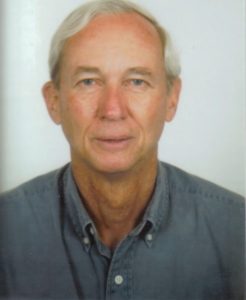 By Pepper Parr
By Pepper Parr
January 10th, 2018
BURLINGTON, ON
It is a 39 page report, it is close to exhaustive. Margaret Wilson, the Facilitator appointed by the province to carry out an Administrative Review of the process used by the Halton District school Board to arrive at it’s decision to close two of the city’s seven high schools: Lester B.Pearson and Robert Bateman.
The report needs a close reading before any analysis can be done. Not that all the analysis in the world will make any difference.
This was a decision made by the elected trustees – the only recourse is to elect different trustees – you get a chance to do that in June of this year.
The Wilson report:
The Honourable Mitzie Hunter Minister of Education
900 Bay Street 22nd Floor Toronto, M7A 1L2
Re: Independent Facilitator’s Report on the Burlington Secondary Program and Accommodation Review, Halton District School Board.
Dear Minister:
On October 10, 2017, your Ministry appointed me as the Independent Facilitator to conduct an Administrative Review of the Program and Accommodation Review Process undertaken in the City of Burlington. The Board’s Review was focused on the seven secondary schools in Burlington.
My appointment was in response to 2 petitions, one dated July 5, 2017 regarding Lester B. Pearson High School and the other, dated July 6, 2017 regarding Robert Bateman High School. The two petitions request an Administrative Review of the Program and Accommodation Review (PAR) of 7 City of Burlington secondary schools. The PAR was conducted by the Halton District School Board between October 19, 2016 and June 7, 2017, the date on which the Board made its final decision. The PAR Committee was formed on December 1, 2016 and held its last meeting on March 17, 2017.
The PAR led to a series of Board decisions on June 7, 2017, including decisions to close Robert Bateman High School and Lester B. Pearson High School. The focus of both the Bateman H.S and Pearson H.S. petitions is on the process which led to the decisions and on the propriety of the decision making process.
In conducting this Review, I received excellent support from Tom Adams, Education Officer with the Toronto and Area Regional Office of the Ministry of Education. I appreciated the co-operation in the process of Trustees, Board Senior Staff and support staff, Principals of the 7 schools, the Ipsos facilitator, members of the Burlington Secondary PARC, a Student Trustee and a Student Senator, petitioners, parents and members of the community. All were generous with their time, frank in their views and had a deeply felt interest in the education of Burlington’s children. In addition to my meetings with participants in the PAR I viewed, on the Board website, all of the Board Meetings during which the Burlington PAR was discussed and or debated. After my meetings with the PARC and the Petitioners I received several letters, on a g-mail account which we had set up, which are germane to how the process worked. In addition, I received a phone call from the Mayor of Burlington.
TERMS OF REFERENCE
HALTON DISTRICT SCHOOL BOARD
Burlington Secondary School Program and Accommodation Review
The Facilitator will be responsible for the Administrative Review of the Program and Accommodation Review undertaken by the Halton District School Board of the seven secondary schools in the City of Burlington.
SCOPE OF THE REVIEW
The Independent Facilitator shall be responsible for:
- Determining whether the Halton District School Board followed its Board approved program and accommodation review process in conducting the Review of Burlington secondary schools;
- Reviewing formal documentation, interviewing relevant participants including PARC members, petitioners and board staff;
- Submitting a written report to the Minister of Education upon completion of the Review
PROCESS OF THE REVIEW
The Independent Facilitator will consult the Senior Board Staff, the Trustees, the PARC and the Petitioners. She will also visit each of the schools which were under Review.
REPORTING TO THE MINISTER
The report should be in the form of a letter to the Minister, indicating whether the program and accommodation review process followed the Board’s Program and Accommodation Review Policy. The report will include recommendations for improvement in the Board’s Program and Accommodation Review Policy and/or Processes.
The Minister is responsible for making the Facilitator’s findings available to the Board and the public in a timely manner.
BOARD PROFILE AND DESCRIPTION OF SCHOOLS
The Halton District School Board is responsible for public English language education in the Halton Region, the only Region in the Greater Toronto Area which is not immediately adjacent to Toronto. The Region includes the City of Burlington and the Towns of Oakville, Milton and Halton Hills. Oakville and Burlington are largely urban while Milton and Halton Hills to the north have large rural areas within their boundaries. The Board is organized into three areas, East (Oakville) North (Halton Hills and Milton) and West (Burlington). The Board is responsible for 102 schools, 84 elementary and 18 secondary.
Secondary schools in the Halton District School Board offer a similar core program consisting of subjects such as English, Mathematics, Science and other core subjects which are required for graduation. Schools also offer a variety of optional courses in areas such as the Arts, Technology, Physical and Health Education, Business, Modern Languages, the Social Sciences and Humanities. Every school offers some Specialist High Skills Majors (SHSMs). These provide an additional concentration of learning in a specific career area. The Board has the highest percentage of students enrolled in SHSMs in the Province.
The availability of a wide range of courses in a particular school is dependent on the size of the school population. Secondary school programs/courses are organized with students’ post High School direction in mind. In terms of Special Education, most students with special needs receive in-school support so that they can attend regular classes in their home schools. Individual Education Plans (IEPs) are developed to ensure that support, curriculum and instruction are individualized.
The concept of Pathways tries to ensure that students are able to take the specific courses required for entry to their chosen Pathway (e.g. workplace, university, college, community and/or apprenticeship) when they graduate. Providing the appropriate core courses can become challenging when, as is the case at Robert Bateman, the grade 9 intake drops to only 75 students.
The Board also offers Regional Programs. Regional programs are not offered in every school. Two of them, ACCESS and LEAP are designed to assist at risk grade 8 students who will benefit from an intensively assisted exposure to secondary school while still in grade 8. The Ontario Youth Apprenticeship Programs (OYAP) is offered in a small number of Halton secondary schools. Some schools also offer Dual Credit programs in which students achieve both a secondary school credit and a Community College Credit. Mohawk and Sheridan Colleges are partners in these programs. French Immersion and Extended French programs are also options for students. The Board has specific programs for gifted students. Each area of the Board also has a regional English as a Second Language (ESL) Centre where specialized support and programming is provided to English Language Learners (ELL). The Board has recently opened, in Milton, a Welcome Centre for New Canadians.
Regional Special Education programs are located in schools that offer specific program areas and courses which complement the special education program. The programs are designed for students on the Community Skills track and the Employability Skills track. The Community Pathways Program (CPP) and Essential Skills Program are offered together at a select number of schools throughout the Board. These schools offer open level courses such as technological education, vocational courses and the arts for CPP students. The students can also access Essential level courses. These are locally developed academic courses designed to meet their needs. Many CPP students are medically fragile and require individual support, specially trained Educational Assistants (EA’s) and Special Education teachers and specialized equipment. Students are gathered together so that there is a minimum number at each site to support viable programming. CPP students are entitled to 7 years of secondary schooling.
The Board offers the International Baccalaureate (IB) at three schools. This program has a prescribed curriculum, prescribed exams and requires teachers and administrators and the school site to hold IB certification.
This Review is about the secondary schools in the City of Burlington; therefore I will focus on the City’s situation rather than that of the whole Board. Burlington lies between the north shore of Lake Ontario and the Niagara Escarpment. The Town of Oakville is to the East and the City of Hamilton is the western boundary. It is located near the geographic centre of the Golden Horseshoe, a densely populated region of over 8 million people. The population of Burlington, in the 2016 census, was 183,314. Burlington started as a small 19th century village on the Lakeshore, surrounded by farms. The village grew slowly into a town and then exploded with development in the years following World War 11. Provincial decisions have influenced Burlington’s urban geography and therefore development decisions and decisions on schools. While the City population continues to grow, areas of growth are limited by the Province’s “Green Belt” and Niagara Escarpment rules. In addition, Burlington is divided north from south by the Queen Elizabeth Way, a controlled access Highway opened in 1939. The City is also bisected by the 407 ETR, another controlled access road, which runs diagonally from northeast to southwest.
Of the 7 schools in the Burlington secondary PAR, 4: Robert Bateman High School (Bateman), Nelson High School (Nelson). Burlington Central High School (Central) and Aldershot High School (Aldershot) are located south of the Queen Elizabeth Way (QEW). Bateman is the furthest east and Aldershot is nearly in Hamilton. Lester
- Pearson (Pearson) and M.M. Robinson (MMR) are located north of the QEW, south of the 407 ETR and centrally in east west terms. Dr. Frank Hayden Secondary School (Hayden), the Board’s newest school, is located north and east of MMR and Pearson but is still south of the 407 ETR. The PAR led to a series of Board decisions on June 7, 2017 which included decisions to close Lester B. Pearson High School and Robert Bateman High School. The recommended date for closing Bateman was June 30, 2019. This was amended at the Board Meeting to June 30, 2020. The approvedclosing date for Pearson is June 30, 2018. The school closing decisions were accompanied by boundary changes and student and program shifts to which I will return.
My appointment responds to petitions from each of Robert Bateman H.S and Lester B.Pearson H.S.
I therefore visited both schools. The PAR involved all 7 schools in Burlington and a number of the decisions made as a result of the decision to close 2 schools affected the other schools in the PAR, in some cases in major ways. I therefore visited all 7 schools, have data on all 7 and will include all of them in my description of the process. My comments on Accessibility under the Accessibility for Ontarians with Disabilities Act (OADA) are taken from the Board’s Facility Audit for Accessibility done by Snyder Architects Inc. and dated February 8, 2017. Only one of the schools was untouched by the decisions. I will therefore describe them in alphabetical order.
Aldershot High School
Aldershot High School was opened in 1960 in an area first settled in the mid 19th century. The first Aldershot School was built in 1870. The area is primarily residential with houses tucked into well-treed lots on quiet streets. The Aldershot neighbourhood and its High School are somewhat isolated from the rest of Burlington. The QEW is on its eastern border and that major road merges with Highway 403 as it turns east. Highway 403 then creates a northern boundary. Aldershot is so close to the Hamilton border that the school has been working with the Royal Botanical Garden, which is in Hamilton, on a horticultural program. The school houses grade 7 and 8 students from the neighbourhood but they are not part of the PAR process. The school is well kept and has a welcoming atmosphere.
Aldershot H.S. sits on a 16-acre site. It is a 2-storey building with several level changes on the ground floor, the result of additions made after the original build. Aldershot offers English Language and French Immersion programming. The school has the usual academic classrooms, multiple gyms, a library, 3 Science labs, 5 Technology shops for College and Workplace Construction Technology and Transportation Technology. There are specialized rooms for Visual Arts, Music, Computer Studies and Family Studies. It also has an auditorium as well as a cafeteria. There is a spacious playing field and a track which is in good condition. The library, gyms, the general office and some computer labs are air-conditioned. There is an adjacent City operated swimming pool which the school uses. There is a paved parking lot with 163 places plus 6 handicapped spaces (HC). Aldershot H.S. meets most of the requirements of the Accessibility for Ontarians with Disabilities Act (A0DA). There is a limited use elevator (LULA) between the 1st and 2nd floors and stair lifts have been installed in several locations to deal with access on the 1st floor. Washroom access has been upgraded but does not meet current standards.
Aldershot H.S. has a student capacity of 1018. The enrollment in 2010 was 523. In 2015 it had dropped to 436 and is projected to reach 461 in 2020. The school offers 109 courses in its calendar but that does not mean that every course is available in any given semester. The courses are primarily focused on College and University bound students but one of the offerings is College and Workplace Construction Technology. The school offers 1 SHSM to 52 students. The reality is that, despite what is listed in the course calendar, 38% of Aldershot students had timetable conflicts in 2016. With the small number of students, not every course will be offered in any given year. The low numbers affect the number of teachers assigned to the school and also affect the number of subject specialist teachers who will deliver the program. As a consequence, most students in grades 11 and 12, who need specific courses for post secondary program entry, take e-learning courses. This is a learning mode which suits some but not all students.
The Board has agreed to examine innovative ideas for Aldershot H.S. including the concept of a magnet school. While the community and its students love their walk-to school, the question of an equitable education for its students remains unresolved.
Burlington Central High School
Burlington Central High School was originally opened in 1922 and has been added to several times since. As its name suggests, it is in downtown Burlington, adjacent to a City of Burlington playing field and track, which the school uses, and close to City Hall. The school sits on a 10-acre site. It has a paved parking lot with 148 spaces plus 1 H.C, The school site and parking are shared with Central Public School. The school houses grade 7 and 8 students but that program was not part of the PAR process. Central is the Dowager of Burlington high schools. It has “good bones” but, particularly in the original building, it is in need of a face-lift. It is a 3-storey building with multiple levels on various floors as a consequence of the additions. The original building has high ceilings, big classrooms with large windows and wide corridors. The newer sections of the school are also light and spacious. It was a bustling, cheerful place on the day that I visited. The school offers English Language and French Immersion programming. The school building has academic classrooms and specialized rooms for Visual Art, Science, Music and Family Studies. There is an Auditorium, a library and a cafeteria. The last major addition added a technical wing and multiple gyms. The Library, Auditorium, general offices and some computer labs are air-conditioned. The Auditorium was recently upgraded with new seats and technical equipment. The building does not meet AODA standards. Some floor areas of the building are accessible only by stairs. Both a new elevator and several stair lifts will be necessary to provide access to all floors.
Burlington Central has a student capacity of 1271. The enrollment in 2010 was 715. In 2015 it was 595. The projected enrollment for 2020 is 593. The school lists 135 courses in its calendar. Central provides English Language and ESL programming. The courses are primarily focused on college or university bound students. The English as a Second Language programs for Burlington are housed here. They range from basic ESL programs to academic courses adjusted for English Language Learners (ELLs). The school is also the Centre for fee paying International Students. The Technical wing houses programs in Construction, Computer, Manufacturing and Communications Technology. In addition there is Technical design and prize winning Technical Design Robotics. Robotics is offered as a Dual Credit course. There are 2 SHSMs serving 33 students. While the calendar presents a large number of courses, they are not always available when students need them. Burlington Central had 32% course conflicts in the 2016/17 school year, mostly in the senior grades. The alternative for students was e-learning or summer school.
The Burlington Central solution will appear in my summary of the Board’s decisions.
DR F.J. HAYDEN SECONDARY SCHOOL
Dr. F.J. Hayden is Burlington’s newest secondary school. It is a 3-storey building which was opened in 2013. It is located in Alton Village, north of Dundas Street and south of the 407 ETR. The Alton area was developed fairly recently as a residential area with most of the homes being detached. Commercial activity is along Dundas Street. Hayden is currently the only school in Burlington which is well above capacity. It is expected to grow until 2021. In comparison with the other secondary schools in Burlington, Hayden sits on a rather small plot of land, 2.6 acres. When the school was planned, a shared facilities agreement was worked out with the City of Burlington. As a result, the school and community facilities were planned and built at the same time. The school and Community Centre share parking, with a total of 404 spaces and 16 H.C. There were bicycle racks everywhere in front of the school. The school has its own playing field and track and its own multiple gyms but it also has open access to the Community Centre gyms and fields during the school day. Hayden is fully air-conditioned and has an elevator. The school meets all of the requirements of the AODA.
Hayden is a brand new place with new ideas about learning in full play, a school for the 21st century. It provides English Language and French Immersion programming primarily for college and university bound students. The school calendar offers 164 courses. The range of offerings in subjects such as History and Geography, as well as in subjects where the compulsory core demands more courses e.g. English, Math and Science is very impressive. In 2016/17 the timetable conflicts were a low 11%. Hayden is a Wi-Fi school. The students use computers all day every day in all subjects although the exclusive use of computers, that is no books and no paper, has become a matter of some debate, including with some parents. The students we saw were clearly comfortable and happy in their school and with their teachers. The school building has academic classrooms and specialized rooms/shops for Technology, Cosmetology, Music, Family Studies, Art, Drama and Science. The Technical programs include Construction, Transportation, Communications, Computers and Technological Design. The school offers 2 SHSMs with 29 students enrolled. The school has a cafeteria but it does not have a dedicated school library. The Public Library is part of the Community Centre complex and, through the shared facilities agreement, a teacher librarian works there but is part of the school staff. The school and Community Centre are attached so that movement between the two is indoors.
Hayden’s student capacity is 1194 but in 2015 it housed 1408 and the projection for 2020 is 1799. The short-term solution has been a bank of portable classrooms which, to the irritation of the community, sit on part of the parking lot. A longer- term solution, to redirect the French Immersion program, is part of the Board’s decisions.
LESTER B. PEARSON HIGH SCHOOL
Lester B. Pearson was built in 1976. It is located north of the QEW between Guelph Line and Walker’s Line in a quiet residential neighbourhood of mostly single-family homes. The 2-storey school sits on a 13.88-acre site. There is an unused “porta- pack” addition on the grounds. Pearson has a well-kept playing field and track. There is a paved parking area for 216 cars plus 2 H.C. places. The school is a quiet, bright and comfortable place and one can easily see why it is valued by its community.
Pearson offers English Language and Late French Immersion programming. The focus is primarily on programs for college and university oriented students. The student capacity is 642, so Pearson was always intended to be a small school. Its enrollment in 2010 was 721. In 2015 it had dropped to 416 and is projected to decline to 353 by 2020. It is the only school in Halton to have late French Immersion. The program starts in Grade 7 at Sir Ernest MacMillan Public School. The school has academic classrooms and specialized rooms for Learning Resources/Student Success, Technology, Music, Art, Drama, Science and Computers. It has a Library, a cafeteria/auditorium and 3 gyms. The Technology offerings are in Construction, Communications and Transportation. The calendar lists 2 Dual Credit courses. There are 2 SHSMs serving 16 students. The school’s low enrollment has affected both staffing and course availability. There is a music room but no program. There is an after school Band in conjunction with M.M. Robinson. Pearson’s calendar lists 100 course options. In the 2016/17 school year timetable conflicts totaled 44%. Over 200 students, roughly half of the student body, were enrolled in e-learning courses. The school manages to meet the demands of the compulsory core, in part with e-learning, but the course offerings are thin. For instance Geography, academic and applied, is offered only in grade 9 and History offers only 4 course options, including both academic and applied from grade 10 to 12.
The school has a LULA elevator but would need further work to meet the standards of the AODA.
The Board decision was to close Pearson. The school is 1.9 km from M.M. Robinson.
M.M. Robinson High School
M.M. Robinson High School was opened in 1963. It is located north of the QEW between the Guelph Line and 407 ETR. It is in a residential district of mostly single- family homes. The 3-storey school sits on 29.85 acres with ample paved parking, 304 spaces, and 5 H.C. It is adjacent to a City operated pool which the school uses. The school has its own playing fields and track. A recent renovation created a large entrance foyer, Drama and Music rooms and a very large elevator. The school is now 75% air conditioned, the remainder being the Tech shops. In the renovation a large wing was added. It is equipped for special needs education and also includes technical shops. The special needs wing has the necessary accessibility features. When I visited the school it was clear that there was no physical barrier to students leaving the special needs wing to access Essential Skills programs. MMR, as it is called, is a large, light filled and spacious second home for its students. The building meets most of the requirements of the OADA.
MMR is a composite secondary school which offers English Language, French Immersion and Technology programs for college and university bound students. In addition it has the full range of Essential Skills courses and Community Pathways programs. The latter programs support special needs students on the Community Skills and Employability tracks. They have access not only to their self-contained special needs and Essentials programming but also to workplace-oriented programs. CPP students are individually assessed for integration into the schools’ programs. The student capacity of MMR is 1347. In 2010 enrollment stood at 1173. By 2015 it had dropped to 730, and this is after the addition of the special needs students. The projection for 2020 is 633. In addition to the purpose built wing, MMR has academic classrooms and specialized rooms for Music, Drama, Science, Art and Computers. There are multiple gyms, a cafeteria and a Library. The Technical shops are equipped for Broad Based Technology, Construction, Communications, Manufacturing, Transportation, Robotics, Technical Design, Communications Technology and Hairstyling and Aesthetics. The calendar lists 6 Dual Credit courses and 6 OYAP programs. There are 130 students enrolled in 5 SHSMs. The schools’ low enrollment has affected staffing and course availability. Some specialized rooms and shops are not in use. The school calendar lists 161 courses. In the 2016/17 school year the timetable conflicts totaled 25%.
The Board’s decisions would change boundaries and program placement to re- direct students to MMR
Nelson High School
Nelson High School was opened in 1957. It is located south of the QEW between Walker’s Line and Appleby Line. It is in a well-established residential area of mostly single-family homes. The 2-storey school sits on a 17.39-acre site. There is ample paved parking, 225 spaces plus 2 H.C. The architecture of the school is very plain 1950’s style on the outside but the interior is bright and welcoming. The halls are wide and the classrooms spacious. The school has ample playing fields and a track and is adjacent to a City owned stadium and field to which the school has access. The Library, gyms, general offices and some computer rooms are air-conditioned. There are 2 LULA elevators, one providing access to the 2nd floor and the other providing access to a small music wing. This meets minimal AODA requirements.
Nelson High School provides English Language, French Immersion and Secondary Gifted Placement programs. The programs are geared to college and university entry. The student capacity of Nelson is 1341. In 2010 enrollment was 1436. In 2015 it dropped to 998 and is projected to rise to 1111 in 2020. Nelson has academic classrooms and specialized rooms for Art, Music, Science, Drama and Family Studies. There are multiple gyms, an Auditorium, a Library and a cafeteria. Technical shops are equipped to deliver Broad Based Technology, Construction, Computer, Communications and Transportation Technologies and Technological Design. The Music program is extensive and English, Mathematics, Science, History and Geography offer a wide range of options. There are 35 students enrolled in 2 SHSMs. The school offers a total of 136 courses. The drop in enrollment meant fewer teachers and tighter timetabling. In 2016/17 Timetable conflicts totaled 18%.
The Board’s decisions would expand and renovate the Nelson building to create a composite High School with a more diverse student population and facilities to meet all student needs.
ROBERT BATEMAN HIGH SCHOOL
Robert Bateman High School opened in 1970 as Lord Elgin High School. It is located south of the QEW between Appleby Line and Burloak Drive. It is close enough to Oakville that a small number of students from an area known as the Samuel Curtis Estate is directed to Bateman. The Bateman neighbourhood is another well- established residential area of mostly single-family homes. There is a shopping plaza, Appleby Village, on nearby Appleby Line. The 2-storey school sits on a 12.79- acre site. There is ample parking for 241 vehicles plus 8 HC. The school has a good playing field and a track and has access to an adjacent City owned pool. Bateman is a pleasant looking building although many of the windows are smaller than one expects in a school. The interior architecture of the school is different from the other Burlington high schools because Lord Elgin was built with a particular mode of teaching in mind. Elgin was designed as an “Open Plan” school. While Elgin did have some rectangular rooms with walls, it also had a number of large open spaces in which a several individual teachers would teach their assigned classes. The idea was that the teachers would also work as a team and “team teach”, when appropriate, the entire large group as part of their team designed program. For a variety of practical reasons, which are not germane here, the Open Plan concept died quite rapidly, at Elgin and in boards across the Province, although in many schools some team teaching survived.
When the Elgin building was converted to traditional classrooms the hallways were placed around the exterior walls as well as in the interior. This means that most of the academic classrooms have no windows. The partitioning which was erected provides adequate rather than good soundproofing between classrooms and has had to be strengthened in some of the special needs rooms. When Elgin and General Brock, a Vocational School, were merged to create Bateman in 2004, a wing was added to the school. The new wing was purpose designed to accommodate special needs students and a number of very up-to-date Technical shops. Some classrooms in the old wing were also re-designed. The addition, and renovations done to the original building mean that Bateman is compliant with the OADA. The school has a full sized elevator to the second floor and several accessibility features in the special needs wing. The school is fully air conditioned except for the Tech wing
Robert Bateman High School offers English Language programming, and Regional programming. It is the International Baccalaureate (IB) Centre for Burlington. It also provides a wide variety of Self Contained Special Education programs which are also Regional. Bateman is a composite school which serves college and university bound students and Community Pathways students. Many of the CPP students are medically fragile. The student capacity of Bateman is 1323. In 2010 enrollment was 1261. By 2015 it had dropped to 799 and is projected to be 726 in 2020. Bateman has academic classrooms, and a large number of specialized rooms. There are rooms for Art, Music, and Science, There are multiple gyms, a Library and Auditorium/cafeteria. The Technical area offers a wide range of options: Broad Based Technology, Manufacturing, Engineering, Welding, Construction (including Robotics) and Transportation Technology including auto body. There is a restaurant quality kitchen for the Culinary/Food program. Health Care, Health and Personal services and Hairstyling and Aesthetics are also available. There is a LEAP outdoor activities program. Essential Skills courses are available in English (4), Mathematics and Science (3). There are 4 OYAP Programs and 4 SHSMs offered. Bateman offers a total of 153 courses in its calendar . The timetable conflict rate is 21%, but over 50% of Bateman’s students are in tightly prescribed Regional Programs . This means that the course conflicts are experienced by the roughly 350 students in the English Language Program. The grade 9 and 10 program has a large number of required courses. The timetabling problem is most serious for grade 11 and 12 students who need both core and optional courses for university or college
SUMMARY OF BOARD PROCESS LEADING TO DECISIONS
The Halton District School Board reviews its Long Term Accommodation Plan (LTAP) on an annual basis. Each new iteration is published and adopted by the Board. The LTAP had identified low enrollment in Burlington’s secondary school since 2012-13. Enrollment in Burlington had been declining for several years prior to 2012. In 1999 Grades 7 and 8 students were added to Aldershot H.S. and in 2001 they were added to Burlington Central. In both cases the intention was to fill empty student places. The 2015-2016 LTAP identified 1748 empty student places in Burlington’s secondary schools. The number was projected to rise to 1919 by 2025.
On October 5, 2016 the Director of the Halton DSB presented to the Board of Trustees the Director’s Preliminary Report on the Undertaking of a Program and Accommodation Review for Burlington Secondary Schools, dated September 29, 2016. The Preliminary Report referred to Ministry of Education initiatives such as the School Board Efficiency and Modernization Strategy, the Community Planning and Partnership Guidelines and the newest Pupil Accommodation Review Guideline. The Preliminary Report provided data on enrollment and programming in each Burlington secondary school. Five of the schools were experiencing declining enrollment and were expected to continue to decline. Data trends on Small and Large Secondary Schools were included, in brief, in the Report. The premise of the Preliminary Report was that “by re-organizing the secondary Schools and creating larger grade sizes HDSB can improve program delivery and learning opportunities for all secondary students in Burlington.” The Report provided an overview of the Program and Accommodation Review Committee (PARC) makeup and PAR process. A list of 19 Options for discussion of the program and empty seats issues was accompanied by brief impact Analyses of each. One Option, #19, had been selected as the “preferred/recommended option”. That was followed, in bold print by the following: “At this time one option is recommended. It is the intent this recommendation not to be presented as a final option but as a starting point for the review and discussions by the PARC.”
The Preliminary Report continued with brief notes on Transportation, Capital Investment, Timelines following a PAR, Community Planning and Partnerships, School Information Profiles and Consultation and Communications Plans. The Report states: “The Board staff recommended option is not to be construed as the Board of Trustees preferred or approved option.” The recommended option was:
- To close Lester B. Pearson HS and redirect its students to M.Robinson
- To close Burlington Central HS and redirect its students to Aldershot HS and Nelson
- To change Dr. Frank J. Hayden SS program and boundary and move the French Immersion Program to M.M. Robinson HS and Robert Bateman, and to redirect a portion of English program students to Robert Bateman and,
- Having added French Immersion to Bateman, redirect a portion of French Immersion students from Nelson HS to Bateman
The Director’s Preliminary Report was accompanied b y 8 Appendices one of which was a presentation given at a Board Committee of the Whole meeting, on the previous day, September 28, 2016, titled “Small/Large Schools”.
For clarity in this Report, I will consolidate the details of the Board’s outreach to the public over the course of the PAR and then describe the PARC meetings.
On October 19, 2016 the Halton Board approved a motion to commence a Program and Accommodation Review (PAR) process for all seven secondary schools in Burlington. The motion was based on the Director’s Preliminary Report. The Board also directed that a Program and Accommodation Review Committee (PARC) be formed which would represent the 7 schools under review. The next day, October 20, 2016, the Burlington PAR website went live on the Board’s website. The Director’s Preliminary Report was on the website as was a description of the purpose of a PAR and the proposed process. “Frequently Asked Questions” were posted on the website and were regularly updated throughout the PAR process. Board Communications distributed a news release on October 20, 2016 explaining that a PAR had been commenced and encouraging the community to attend November supplementary information nights. These nights would be “information only” rather than question and answer sessions.
An e-mail was sent out to all families of Burlington elementary and secondary students, via the Board’s Home Notification System, advising them of the initiation of the PAR, of how to keep track of the process and of the dates and locations of the supplementary information nights. The message emphasized that the staff recommendation was not a final decision of the Trustees, but a starting point for consultation. On November 9, 2016 the Board sent out a news release which the Burlington Post used for two stories on November 11 and December 2, 2016. The November 11 article included the statement that “Option 19 is not the final decision of the Board….(it is) to initiate the PAR process and gain input from the community.”
The Director wrote to Burlington High School students on October 27,2016 informing them of the PAR and inviting them to attend the information sessions and informing them of where to find the presentations on the board website. The letter states that the initial recommendation is not the final decision. The supplementary information nights ran between November 1, 2016 and November 16, 2016 in each of the schools in the PAR. The Director and Senior Staff members presented the information using 32 Power Point slides. The slides outline, mostly in plain English and with graphs, the enrollment situation of each school, the general program delivery consequences of low enrollment and the PAR process, including how to participate. The presentation and a video were posted on the Board website for those who could not attend. A flyer outlining the PAR timelines was handed out at the information nights.
The Board hired Ipsos Reid as a neutral third party to assist with the design and management of the Public Meetings required by the Board’s PAR Policy. Ipsos was also to facilitate meetings of the PARC and assist with meeting records.
The Program and Accommodation Review Committee (PARC) met on December 1, 2016 for an orientation session. The information provided at that session was used at the first Public Meeting.
The Board’s outreach to the public went well beyond the use of electronic and paper media. The first Public Meeting was held on December 8, 2016. The information sent out announcing the meeting made it clear that the purpose was information gathering, not a Question and Answer session. The Agenda included an overview of the PARC orientation session, the Director’s Preliminary Report, including Option 19, presentation of the School Information Profiles (SIPs) and the gathering of individual input on the PARC framework around 4 themes: Programming and Enrolment, Physical state of the 7 schools, Geographical and Transportation issues and Fiscal responsibility and future planning. The presentations were followed by a questionnaire, organized around four 20-minute sessions focusing on a distinct topic. Participants answered each question using an electronic clicker. Each segment concluded with a discussion. The first Public Meeting had over 300 people attend, but only three schools hit double digits in attendance: Central, Pearson and Hayden.
The Board held two more Public Meetings, on February 28, 2017 for schools in North Burlington and on March 7, 2017 for school in South Burlington. About 400 people attended the February meeting and around 700 attended in March. These meetings used a “Town Hall” format in which members of the public could ask specific questions both about the Board’s situation and the options which were generated by the PARC. This was not large group Q and A. The media release, newspaper advertisements, and the e-mail to parents/guardians included the format of the meetings and reminders about the Board website and its information. Nearly 30 Board staff were at stations around the rooms and were prepared to answer individual questions. The Options which were still under discussion by the PARC were posted at each station. The stations were staffed with HDSB experts in Human Resources, Facility Services, Planning, School Programs, Student Services (Special Education) and Business Services (finance and transportation). A handout “Guide to the Public Meeting/Open House” was given, by Board Staff, to attendees at the entrance. The Handout explained the meeting format and highlighted the Online Survey which had been developed and encouraged participation in it. It also presented the then timeline for completion of the PAR and in the middle spread sheet outlined the 6 Options which were still under discussion at the PARC. The Options were also posted on the Website.
In addition to the Public Meetings and Supplementary Information Meetings, on November 21, 2016, the Board hosted a live, online Question and Answer session for parents/guardians, students and community members. During the 1 ½ hour session the Director and the General Manager of Planning received and answered more than 240 questions. Questions which were not dealt within the allotted time were answered as part of the Frequently Asked Questions section of the PAR Board website. A video of the Question and Answer session was also posted on the website.
Once the Director’s Final Report was made public, the Board scheduled two Special Delegations nights on May 8 and May 11, 2017. They heard 59 delegates over the two nights. They then allowed 6 more delegations on May 17, 2017. All Board Meetings relative to the Burlington PARC, including the Special Delegations nights, were live-streamed and remain on the Board Website.
The PARC, as previously noted, met first on December 1, 2016, for an orientation session. Following Board Policy, it consisted of a Trustee as an ad hoc member and a Superintendent as Chair, both from an area which was not under review. From each affected school there was the Principal, as a resource person and 2 parents/guardians. One of the parents was nominated by the School Council Chair. The other was selected by the Superintendent from parents who had expressed interest. The selection process was intended to ensure that all affected geographic areas and programs were represented. The PARC invited the City of Burlington to name a representative. It named the City Manager. All Trustees were invited to attend PARC working meetings to observe the proceedings.
The orientation session presented the Director’s Preliminary Report as the PARC’s Terms of Reference. The PARC’s role was defined as advisory. It was to be the official conduit for information shared between the Board of Trustees and school communities. The proposed timelines for the PARC and Public Meetings were accepted. While the PARC was to provide feedback on the options in the Director’s Preliminary Report, it could also provide different options. In providing information to the Board, the PARC did not need to reach consensus. PARC members were welcome to attend the Public Meetings.
The PARC Framework in the Board Policy lists 13 items which might be considered by a PARC. The first 3 are: Range of mandatory programs, Range of optional programs and Viability of Program-number of students required to offer and maintain program in an educationally sound and fiscally responsible way.
PARC Meeting #1 was held on January 26, 2017 at the Board Office. All members were present. The General Manager of Planning and 2 of his staff members attended, as did the Director of Education. The Planners attended all meetings as resource people. The Meeting Notes record that the responsibility of the PARC was re-iterated. It was “to deliberate on options, drafted by HDSB staff and by PARC members themselves.” The PARC was then to develop a short list of options for the Director of Education. He in turn would make recommendations to the Board which would make the final decision.
Prior to the 1st Working Meeting PARC members were asked to complete a short online survey to gauge what they thought of the current 23 options. Only 7 members responded. The 14-parent/guardian PARC members divided around 2 tables of 7 with the Ipsos Facilitator and the Chair of the PARC moderating and taking notes. The discussion was also recorded. The topic of discussion was the 23 options. Other attendees named to the PARC such as the Trustee liaison, the Principals, and Board staff were observers/resource people. Members of the public were also present. By the end the discussions, 13 options were removed. The Meeting notes confirm that closing Bateman was discussed under 4 of the remaining options. The notes on 3 of the Options were revised following a PARC request on February 14, 2017. The revision records concerns around the relocation of Bateman’s special education students. The notes also record an extended discussion, under Option 23, of Special Education and Bateman. Pearson is identified for closure in 2 of the remaining Options.
The PARC requested more information on timetable conflicts at all of the secondary schools, numbers of students from 4 public feeder schools opting to attend a Catholic secondary school, costs of building a new wing for Special Education (SPED) students and costs and logistics to move CPP/SPED program and equipment to another school.
The 2nd Meeting of the PARC was held on February 2, 2017 at the Board Office. Three parent members were absent, 2 from Hayden and 1 from Bateman. PARC members had been asked to continue to discuss, by email, the outstanding options and to propose new options. Thirteen new options were proposed. The Trustee representative was nominated to keep a speakers list to ensure that all PARC members had a chance to offer comments. There was a discussion about adding a meeting to the PARC schedule. With three members absent, at the request of several members, the group of 11 formed around one large table. At the outset of discussions for each new option, a Board Planner provided a synopsis of the consequences.
All options had been previously circulated to PARC members. Because the existing options had been discussed at the first meeting, the group decided to start with the new options. The Notes, again taken by hand and recording, show that most of the meeting was taken up with discussion of 2 new options, both of which closed Bateman. There are extensive notes on the pros and cons of this move and many questions and comments. Some members looked for more information and others wanted to know how transitions would be handled for special needs students. There seems to be no discussion of the program needs of Bateman students who are not identified for Special Education. The Bateman discussion closed and there are notes on a brief discussion of a new option, closing Pearson and Central. It is new because the boundary changes redirect students differently from Option 19.
The PARC requested information on OADA costs for the 7 schools. It decided to lengthen its meetings from 7-9 to 7-10 PM and to add a meeting to the schedule.
PARC members were requested to respond to an email from the Chair requesting input on the options not discussed at the meeting.
The 3rd PARC Meeting was held on February 9, 2017 at the Board Office. The Superintendent of Business Services and the Director attended. There was a new addition, Student Leaders as observers..
In preparation for the 3rd meeting, PARC members were asked to consider, by email, outstanding options and to propose new options. The outstanding options were in 3 categories: “No Closures”, “One closure” and “Two closures”. One remaining option proposed no closures. Five options proposed 1 closure and 8 options proposed 2 closures.
The PARC received 2 presentations in response to its questions. The Superintendent of Business Services, using Option 19, the closing of Central and Pearson as an example, discussed savings which could be achieved. There was then a discussion on staffing implications, busing and Portable costs. The 2nd presentation was on the cost of making all Burlington secondary schools fully AODA compliant.
The PARC members were asked to pair by school and provide input on the outstanding options in two modes. Each option had foolscap paper. With reference to the 13-point PARC framework members were asked to write whether or not an option met, or did not meet the criteria. Any suggestions were to be written on the foolscap. In addition, there was a “dot-mocracy” exercise. Members were given 3 dots and asked to attach a dot to the three options which they favoured. Options which received 2 or fewer dots were removed from the list. This left 4 options. One was no school closures, one closed Bateman and 2 closed Pearson and Central. There was a complaint that, because the Superintendent had used Option 19 as her example of savings, the two exercises had been biased against Central. The notes state that this complaint was deemed substantial because comments on the foolscap reflected some of the presentation from the Superintendent of Business Services. The group agreed to leave option 23, which closes Bateman, on the list.
The Director had brought the student leaders to the PARC meeting. He talked to the PARC about interacting with student leaders when they went on school tours. One of the leaders spoke to remind the PARC members to not only think about finances but about what is best overall for the students.
The 4th PARC meeting was held on February 16, 2017 at the Board Office. The Chair and 1 parent member were absent. The Associate Director sat in for the Chair. Two Superintendents of Education and the Superintendent of Facility Services were present.
Again, the PARC had been asked for input, by email, on the 5 outstanding options, including option 23, which had not been discussed at the 3rd meeting. One additional option was put forward between meetings 3 and 4. The list was now: No Closure, 1; One Closure, 2 and Two Closures, 3.
The Superintendent of Facility Services spoke about the facility costs of the 7 High Schools. He had the difficult job of explaining 2 different sets of numbers. One set, which the PARC had, came from an older database which he stated was incorrect and no longer in use. He presented information from the database to which both the Ministry and the Board had transitioned. This data was current and considered accurate.
The PARC broke into 3 groups, organized as follows:
- Group 1: Pearson and Hayden, 4 PARC reps
- Group 2: Aldershot and Central, 4 PARC reps
- Group 3: MMR, Bateman and Nelson, 6 PARC reps
Each was facilitated by a superintendent who took notes. The groups were asked to discuss the remaining options within the context of the PARC. What elements of the options addressed, or did not address the framework. How could a particular option be improved, for instance by Capital improvements, program improvements or transition planning? Should an option be removed from the list?
The Notes of the discussions indicate that the PARC considered each of the 6 options in detail. The Schools which are identified for possible closure in the 6 options are, by number of options, Nelson (1), Bateman (2), Central (2) and Pearson (3). The notes on several of the options indicate that the needs of Special Education students was part of the discussion. There is no record of discussion of the program needs of students who are not identified for Special Education. The 6 options were to be part of an online survey which the Board was going to release on February 27, 2017.
The 5th PARC meeting was held on March 21, 2017 at the Board Office. One parent member was absent. This was one of two meeting held in the same week.
The first part of the 5th meeting provided initial information from the Survey. The quantitative data showed that 1611 surveys were completed, but there had been some instances of surveys coming more than once from the same IP address. In the view of Ipsos these were not sufficient in number to invalidate the results.
The Committee was given course selection sheets from a selection of small and large schools in Halton. These highlighted the current timetabling and programming challenges facing secondary students. Simply put, larger schools could offer a diversity of courses in a face–to-face environment. Small schools had to rely on online courses, whether or not this mode of learning suited students. Small schools might also have to combine different grades and courses in the same classroom.
The PARC then engaged in a roundtable discussion. Each PARC member presented his or her personal view of each option. The sample course selections sheets led to timetabling and programming being the major focus of the discussion. The Committee discussed 3 of the options in detail. A recurring concern was students transferring to the Catholic Board if the wrong decisions were made. There are extensive notes on the needs of the Special Education students at Bateman.
The Committee was to continue the discussion at its 2nd meeting that week. They adjourned at 10 P.M.
The 6th PARC meeting was held on March 23, 2017 at the Board Office. Two parents were absent, one of whom sent email comments prior to the meeting.
The Chair discussed the revised timelines for the PARC. The minimum of 4 meetings of the PARC had been extended to 6. As a consequence, the timelines for the Director’s Report to the Board, in Committee of the Whole would have to be adjusted. Based on the other adjustments to the process which would be required, the report would go to the Board for final decision on June 7, 2017. The Chair also said that an additional meeting, to discuss Innovation, could be held on March 27.
The PARC was asked to focus on programming and the student experience. After some general comments from committee members, the PARC discussed the remaining options. The first option discussed involved closing Bateman and Pearson. The notes indicate that there was discussion of the special nature of the Bateman programming in that the Community Pathways students were integrated into the whole school rather than being confined their own wing. Some PARC members noted that specialized programs have been successfully moved in the past and can be again. The second discussion was of 2 similar options, both of which closed Central and Pearson. One of the options was the original Option 19b which closed Central and Pearson. There was general agreement that 19b, which closed Central and Pearson, be removed.
The Chair said that the Director would receive a report on the findings of the PARC with the 5 remaining options for consideration. The PARC had fulfilled its Terms of Reference.
The Associate Director presented data on regional/magnet programming. He pointed out that innovations should be seen through a programming lens, not as a means of filling empty spaces. He pointed out that only 55 Halton students attended regional programs in other boards. Students generally stay within their municipality. So magnet programs will not fill the 1800 empty pupil places. And putting grade 7 and 8 in secondary schools fills seats but does nothing for programming for secondary students as their numbers shrink.
The 7th PARC meeting was on March 27, 2017. Three parents were absent. Two Superintendents attended. They were responsible for Education- Innovation/ingenuity and Education-IT and International Students. The Director and Associate Director also attended.
The Director thanked the PARC members for their contribution to the PAR process.
There was an extended discussion of the current state of innovation in the Board. New ideas from the PARC members were discussed. The City Manager noted that higher density housing units don’t house many families with secondary students. He also commented on the risk in selling land when a school is closed because of the predicted exorbitant costs of land purchase in the future. The discussion went on for over 2 hours.
PARC members wanted the public delegations to be equitably allocated to ensure fair representation of schools and topics/themes.
The Chair and Trustee thanked PARC members and Board staff for their commitment to the process. The Chair formally dissolved the PARC.
The Director’s Final Report, with 18 Appendices, was distributed to Trustees on April 20, 2017. It was posted on the Board web site on April 21. This was standard procedure for reports which were to be discussed at the next Board Meeting. The Board met on April 26 with a single item on the Agenda, the Director’s Final Report. The Executive Summary of the Report contained the following Director’s Recommendation:
- Robert Bateman High School be closed June 2019 and students re-directed to Nelson High School and M.M. Robinson High
- The International Baccalaureate Program to transfer from Robert Bateman High School to Burlington Central High School, effective September
- Lester B. Pearson High School be closed June 2018 and the students be re- directed to M.M. Robinson High School commencing September
- French Immersion program to be moved from Dr. Frank J. Hayden Secondary School as of September 2018, beginning with the Grade 9
- Students from the “Evergreen” community (currently undeveloped) will be directed to M.M. Robinson High
- Aldershot High School will be explored as a site for a magnet program or themed
THE PETITIONS
The petitioners and members of the public were heard at 2 successive meetings. The lead petitioners presented on the first night, followed by other supporters of the petitions. On the second night both petitioners and members of the public spoke.
Robert Bateman High School Petition
The letter to the Minister from Denise Davy, Lisa Bull and Stephen Beleck claims several breaches of Board Policy. The petitioners state that their review of the process documents the breaches. The following is quoted from the letter:
- The board’s policy states: Processes for decision making including those related to program accommodation, school boundary reviews, school closures/consolidation will be timely, inclusive, transparent and open. This review documents cases where inclusivity was not followed for students/parents with disabilities.
2:The board’s policy states: There must be no fewer than ten (10) business days between the date of public delegations and the final decision of the Board of Trustees. The final vote by the Board of Trustees was June 7, 2017. That same night there were public delegations made to the
- The board’s policy states: The final decision regarding the future of a school or group of schools rests solely with the Board of Trustees. This review details the involvement of a City Councillor providing instructions to a HDSB Trustee during the June 7, 2017 final vote for closure of Robert
A note is hand printed on the letter stating that the petitioners’ review, which is attached to the letter, contains 27 points/areas where the HDSB did not follow its a Accommodation Policy. Some of the additional points are that school communities did not have a clear understanding of the process, that the PAR process did not include feedback from teachers and that the Director’s Final Report did not contain information from the delegations.
When I met with a number of petitioners, over two evenings, they spoke of how much they value the inclusive atmosphere of Bateman. They gave me additional print material on the value of their school. They wanted the Board to look at boundary changes rather than closing their gem of a school. I should point out the Bateman petitioners were almost entirely focused on the special needs/CPP students and their program. My notes do not record any discussion of the needs of students in the English Language program or the IB.
Petitioners felt that the CPP students were not sufficiently included in the PAR process. Only 30 out of 300 the CPP students responded to it and only 48% of the other students. But the school administration made appropriate efforts to encourage student participation. On November 25, 2016, during Period 2, all students were invited to complete the student survey. CPP students had their usual assistance from EAs and teachers. The survey was voluntary. The school cannot be faulted for allowing students to make their own decision about participation.
A number of petitioners felt that teachers and staff should have been allowed to participate in the process. At the very least, the teacher/staff survey should have been available to the PARC. A petitioner said that there was not enough time to delegate and another complained that only 2 or 3 Trustees responded to her emails. There were complaints about the PARC member who was a parent and also a City Councillor. Because of some behavior in both the Gallery and at the Board table during the June 7th meeting, that petitioner felt strongly that electronic communications with Trustees should not be allowed during Board Meetings.
Petitioners were concerned about the transition for medically fragile CPP students. They would like, but do not have, a guarantee that teachers and education assistants will move with these students. The Chair of SEAC stated, “I was appalled by the lack of understanding and ignorance of PARC members about Special Education.” She believed that the letter which SEAC sent to the PARC was not given the attention it deserved. A student petitioner noted that a detailed plan for a massive transition of vulnerable kids was not yet available.
Two petitioners addressed specific program issues. A representative of the Trade Association for the Welding Industry spoke of the nature of today’s welding trade and the very delicate work that welders now do. He said, “The program at Bateman has significant value in fostering student achievement.” As the only program between Bateman and the US border, it has significant value to the industry. He was certain of the program’s value, but less certain that the Board would transfer it to Nelson. A parent had a lovely story about her son and how the Bateman program works. The boy is ADHD and autistic. When he started at Bateman he wanted to do Essentials and the culinary program. Bateman allows rotation through the Technical programs so he is now starting to learn welding. His 2nd rotation is in woodworking and it turns out that he has real talent in this field. His mother talked of the trinket box he made for her. When I remarked that I would love to see it she emailed a picture of boy and box the next day. And yes, he has talent. But she worries that Nelson may not have an integrated program.
Several petitioners would like the Minister to order a new PAR process under the new PAR guideline which is at the consultation stage.
The Board’s Response
The Board sent multiple notices to parents, students, community partners and the broader community to alert them to the Burlington PAR. Notices of all meetings related to the PAR were posted on the PAR web pages on the HDSB web site. All materials, such as the Director’s Reports, and Power Point presentations were posted there. The PARC Notes/Minutes were posted. The system tracked the number of page views/hits by month: November 2016, 4593, December 2713, January 2017, 4307, February 13096,March 14266, April 11495, May 4449, June 3220. All venues for meetings were fully accessible. The Principal of Bateman requested teachers and EA’s to assist CPP students to fill in the student survey if they wished to do so. Parents were regularly up-dated on the Home Notification
- The Burlington Post published 23 stories related to the Burlington PAR between October 2-16 and June 2017. News reports on the PAR process were also covered by the Hamilton Spectator, CHCH TV and the online publication, the Burlington Gazette. The Board believes its broad dissemination of information on the PARC, across a variety of media, was inclusive, timely, transparent and open.
- The Board has a separate by-law (Delegation By-Law) that allows up to six delegations at Board meetings where decisions are being made. This practice has been in place for the Board for the last 15 years, and is not exclusive to the PAR. The Board would have been in violation of the Board’s Delegation By-Law should they not have heard the 6 delegations on the night of the Trustees’ decision. The Board notes that some of the delegates heard on June 7 were in favour of the decision. The two specially designated delegation nights for the PAR were on May 8 and May 11, both of which are more than 10 business days from the day of the final decision (June 7). As such, the Board has not violated their PAR policy by abiding by their long-standing Delegation By-Law.
- The PARC, once constituted, invited a municipal councillor or delegate to join it. The Mayor appointed the City Manager. Marianne Meed Ward’s membership on the PARC was not in contravention of Board policies. She was identified as the designate by the School Council Chair of Burlington Central HS as she is a parent at the
- There were many ways in which teachers were able to give feedback during the PAR process. Senior Board staff attended school staff meeting to give updates on the PAR and to respond to There was a staff specific online survey. The Director provided continual updates to Family of Schools system administrators. School administrators met with senior board staff regularly to share updates. The Director provided monthly updates with staff unions/federations.
The Board’s Delegation By-Law states: Employees of the Board, representatives of employee groups shall not utilize delegations to the Board to express their views relative to their employment or professional interests.”
- The Director’s Final Report did not contain information from the delegations. The Board states that the delegations from both public delegations nights were recorded and live streamed. The Trustees were able to hear all of the delegations and special accommodations were made for the “overflow” of attendees at these meetings. These videos are available on the Board’s website. The Board Meeting after the public delegations was also live-streamed.
The Board Responses to most of the additional claims in the Bateman Petition is that they are not about breaches of policy but about processes or decisions which the petitioners do not like or with which they disagree.
Lester B. Pearson High School Petition
1:The letter to the Minister from Steve Armstrong claims a number of breaches of Board Policy. Mr. Armstrong starts, as did the Bateman petitioners, by questioning the Board’s commitment to its policy of “timely, inclusive, transparent and open” processes for decision making including those on “program, accommodation, school boundary reviews and school closures/consolidation. He then claims a number of policy
- The PAR Policy clearly states that PARC will provide feedback to the Board of Trustees. The primary method of interaction with Trustees was by emails, most of which received no response of a short acknowledgement indicating receipt. There was no presentation, dialogue, or documents created as an output by PARC
- Board policy states that the Board will “share relevant information with the public…(to allow) opportunity for input. But some community members, when they sought information which they thought relevant to the PAR, met roadblocks and one had to file a Freedom of Information
- PARC members took seriously their responsibility to interact with their communities but were excluded from some processes which might have helped the conversation. Examples are that PARC had no input into the student and teacher/staff surveys. The PARC was not given access to the latter
- By Policy, one of the Board’s conditions for approving a PAR is that “reorganizing involving the school or group of schools could enhance program delivery and learning opportunities for students.” The petitioner questions the accuracy of the Burlington enrollment projections and the information in the SIP’s. He attacks the Board’s failure to look at boundary changes which would rebalance the student population. He points out that only 1 of the original 19 options for discussion involved no school
Mr. Armstrong’s letter lists a number of procedural issues relative to how the PARC worked including how minutes were dealt with, what communication was appropriate with individual Trustees, and the role of the Municipality in the PAR process. He then finishes with 2 more claims of Policy breach:
- Board Policy states ”The Director will present the Final Report, including the compiled feedback from the public delegations, to the Board of Trustees.” His Report was deficient in that it did not provide that
- Board Policy states “There must be no fewer than ten (10) business days between the date of the public delegations and the final decision of the Board of Trustees.” Public delegations were heard on June 7th, the same evening as the final decision was
At the Petitioners Meetings the Pearson Petitioners shared some issues with those from Bateman but had their own perspective on the PAR. They see their small school as very suited to many students who are uncomfortable in large institutions. At Pearson, everyone knows everyone else. They found the process very divisive.
They saw much of the dialogue being framed around utilization when the real problem was program. They also felt that there was no open dialogue on the financial cost of the decision. In their community they had little co-operation from the principal in obtaining mailing lists. In addition there was no input from teachers. And there was no direct interaction with their Trustees regarding the PARC so they didn’t know what the community thought. For one PARC member the real eye opener was his tour of all of the schools.
One petitioner had delegated at the June 7th meeting and was sure that the Trustees did not have time to process the 16 pages of information which he provided. A petitioner noted the lack of any risk analysis in the Board’s decision. He questioned the reliability of the Board’s growth projections. Other petitioners returned to the issue of teachers and EAs moving with their students.
One of the under-currents in PARC discussions was the newest school, Hayden SS. Boundaries for other schools changed when Hayden opened. Both petitioner groups had opinions. One petitioner stated that the question of overutilization at Hayden was never discussed by the PARC. The 12 Portables at Hayden were a Health and Safety issue. Another had investigated the decision to build Hayden. He believed that Hayden should never have been built. He had made FOI requests of both the Board and the Ministry in his research.
The Pearson petitioners wish all 7 schools to remain open until Burlington’s population growth numbers are more certain.
The Board’s Response:
Note: I will not repeat a response if the issue is identical to one of Bateman’s.
- See Response 1 to Bateman
- The PAR Policy places a Trustee, from another area of the Board, on a That Trustee’s role is to act as liaison between the PARC and the Trustees.
The person is expected to keep the Trustees up-to-date on the ongoing discussions of the PARC. Trustees also had access to the PARC Minute/Notes. The PARC feedback is to the Board as whole, not individual Trustees.
- All requests for information regarding the PAR need to fall within the purview of the PAR. Information requested from a member of the public was related to business case submissions for the Dr. Frank Hayden SS Capital Priority submission to the Ministry. As well there was a request for the agreement between the City of Burlington and HDSB from 1977 regarding community uses of Lester B. Pearson HS and more specifically the co-op nursery school located in the facility. Freedom of Information requests were made and information was provided whenever asked. No appeals were launched.
- The Ministry Guidelines and Board Policy affirm that the PARC assumes only an advisory role. This was clear in the Terms of Reference presented to the PARC at the Orientation Meeting On December 1, 2016. The PARC did receive the student survey. The teacher/staff survey was heavily redacted to ensure respondents could not be identified. The results were provided to the decision makers, the Board of
- Prior to Board Approval of a PAR, the Director, must present a preliminary report. One or more of the following must be present:
The school or group of schools has experienced or will experience declining enrolment where the On the Ground (OTG) utilization rate is below 65%.
Reorganization involving the school or group of schools could enhance program delivery and learning opportunities for students.
Three Burlington High Schools met the first condition: Robert Bateman, M.M. Robinson and Lester B. Pearson. As well, the Director’s Preliminary Report discussed the issues associated with small secondary schools and indicated that reorganizing the schools could enhance program and learning opportunities for students.
- See Response 5 to Bateman
- See Response 2 to Bateman Petition
The Board Responses to the claims in the rest of the Pearson Petitions are that the claims are not about policy but about processes or decisions which the Petitioners did not like or with which they disagree
Ipsos
When I met with the Ipsos facilitator he said that the level of partisanship and personal interest in the PARC had surprised him. There was tension in the PARC from the beginning. He helped set up processes in line with Board Policy. He noted that he had attended each meeting and that at each one, a colleague as well as a Board staff member had taken notes. He said that he had made it clear to the Board what the survey/questionnaire could and could not do. It could validate what was happening in the community. Any more intensive consultation with the community would have been a qualitative exercise. But these are labour intensive and therefore expensive. His view was that the PARC members were very involved with their communities. He noted that there were several well-connected people on the PARC, people who went on their own to the media.
THE TRUSTEES
The HDSB, in designing its PAR Policy, decided that one Trustee would be named to the PARC and act as liaison with the other Trustees. I therefore met briefly with her to get her perspective on how the liaison function had worked. She said that generally it had worked well. She thought that the expanded timeline worked well and would not go back to 4 meetings. She also believed that no current or former local politician should be on a PARC. A former Trustee was a member in addition to the City Councillor. She said that the staff bent over backwards to ensure that everyone had a voice and “they have not been thanked.”
I also met briefly with the Chair of the Board to ask about 2 specific issues, the use of email during Board Meetings and the decision to have a Parliamentarian available for advice during the June 7, 2017 Board Meeting. She said that at present there were no rules about email activity during meetings but that there had been some discussion of it as an issue. She received emails, which, as she was chairing the Meeting, she ignored. Board members received over 700 emails during the course of the June 7 Meeting. The Parliamentarian was brought in because a Trustee had served notice of her intent to move a Substitute Motion to replace the Motion in the Director’s Final Report. While the Chair had been trained in parliamentary procedure by the expert who came to the meeting, she believed that having expert advice during a relatively uncommon procedural move would be helpful to all of the Trustees.
Immediately following the above two meetings I met with the Board of Trustees. They were unanimous in the view that the single Option as a starting point was a huge problem. They noted that the Director kept reminding the school system and the public that the Recommendation was only the starting point but he was not heard.
Other than that, there was little real agreement. For instance, one Trustee thought that the local Trustee should be a member of the PARC while another thought that people external to the school should work with the school representatives because the school reps find it difficult to look at other options. The latter Trustees wanted to get people who know planning into the process and didn’t seem to realize that the Board had expert planners on staff. Some thought local politicians should not be members of a PARC. Others said that if they were parents it would be anti- democratic to exclude them.
One Trustee described the PARC members as “traumatized” by the end of the process. One made the point that the PARC should be able to have closed working meetings, with a note taker, but no attribution of comments or ideas to particular speakers. This Trustee thought that all of the necessary information was there for the PARC and that the Notes were well done. She thought that a brainstorming meeting between the Director and the Trustees, prior to triggering the process would have been helpful.
A Trustee said that she thought the process was innovative and creative. She was referring to the outreach to the community in the Director’s online Question and Answer session. She liked the Town Hall idea and noted the huge staff turn out for it. She also noted that the process “sucked our board staff dry”. In her view, any revision of the PAR process has to attend to what it does to staff workload. She also noted that the FOI requests were sometimes onerous.
A final comment was that the Trustees expected the Director’s Report on Delegations to be very high level; a summary of the major points made.
The Student Voice
I met with 2 secondary school students, one of whom was a Student Trustee during the PARC, and is still a Trustee. The other was the regional representative for Burlington on the Board’s Student Senate and President of the Student Council at his school, Nelson. The 2nd Student Trustee during PARC has left home for university.
The Student Trustee did not attend any Private Sessions of the Board. The Board wanted her to work with students so that they could express their views on the PAR. She handled email questions from students. The Associate Director would get her the answers and she would reply. She felt that Student Trustees have always been listened to by staff and fellow Trustees. The Student Trustees did meet with the Student Senate. She is an IB student in Oakville and believes that the IB program is moveable. In her opinion, IB students need to be able to choose from a breadth of courses with qualified teachers. The range of IB courses at Bateman is limited and she said this at the Board Meeting. She did worry at times when she spoke up but things were fine.
The Student Senator said that he received all of the information the Trustees had. The Director and the Associate Director met with all of the Burlington Student Council Presidents to try to alleviate fears. As far as students were concerned, the PAR was much more important than the other big issue, French Immersion. The latter was ignored during the PAR. He is now on the Integration Committee and has met with the President of Bateman to try to deal with concerns.
Both said that the PAR had been a huge amount of work.
OBSERVATIONS OF THE PARC
When I met face to face with the PARC, most members thought that the single opening Recommendation, which closed specific schools, was a disaster. It undermined any attempt to act for the whole community by pitting two schools against the others. Then, as the PARC dealt, in public, with other options other communities got upset. A member noted that the process brought out the worst in the group and in the community. Social media was abusive, nasty and mostly false. But, most members also believed that some recommendations were necessary as a starting point.
Many of the points raised by the petitioners were raised again at my meeting with the PARC. One said that the PARC was the worst thing she had ever done. She felt that there was no real discussion and no opportunity to refute positions. Her points were focused on the needs of the Special Education students. She had wanted highly detailed information from staff on how the transition would work, especially for CPP students in years 6 and 7 of the program. Another said that she didn’t know that program was an issue until almost the last meeting. A third member thought that boundary changes were the solution but that they got focused on the 1800 empty seats. The boundary change idea was repeated by several other members.
Some members commented, for and against, the structure of the Public Meetings. The most constructive comment was that an introductory session, with all present, would help people to understand an unfamiliar format of “information stations”.
Another member said that the meetings were chaotic. A member thought that the PARC could have helped design the methodology of the meetings. Other members thought that the Town Hall style worked well and enabled more people to get information.
The comment was made that the PARC was not given enough numbers to see how students were disadvantaged in the smaller schools in terms of program choice and availability of program. More time should have been spent on this. ( NOTE: that PARC member is identified, in the Notes, as absent at the 2 meetings which worked on program issues) Several members wished that the PARC had some meetings in private. A number also thought that they should have been able to have meetings in their schools specifically for parents. One PARC member complained that the Board did not ask the Municipality to take a position on the initial recommendation. She believed that the City Councillors and Trustees should be compelled to participate in
PARC processes. Another member did not agree with the involvement of either City Councillors or Trustees.
One member pointed out that lots of things did go well but it is easier to criticize. He thought that the Director and the Board went above and beyond anything he had seen before in trying to get information out. The Board did its best in the circumstances.
Other relatively minor issues were raised. Two people expressed concerns about process for approving Minutes and the question of corrections being made. One said that the idea of innovation was starting to take hold. One said that two composite schools will be beneficial to the community. The Chair made the point that the Burlington PAR was very ambitious since it covered 7 High Schools. He pointed out that every meeting went overtime and said that the creativeness of the group was vast.
EMAIL and G-MAIL
During the course of my Review a number of participants had access to Tom Adams’ email address at the Ministry. Mr. Adams forwarded to me all correspondence which was relative to the Burlington PARC. In addition we opened a g-mail account to receive comments from the public.
During my meeting with the PARC, people were very civil to each other. On the following day, the email and g-mail comments started to arrive. They highlighted what I had heard verbally, the PAR process had been deeply emotional and divisive in the community. One PARC member stated that there was substantial discussion of the special needs kids during the PARC meetings, so much so that it was difficult to get to the English Language programming issues. That person did not speak up the night before because it would have caused another uproar. Another member emailed on the PARC’s discussion of special needs students. This person pointed out that the Notes show that there was discussion at every meeting. Not only that, but a former Trustee and Chair of SEAC was a PARC member. In those roles she had helped design much of the Board’s approach to programming for special needs students. “Her expertise guided many of our discussions at the PARC.” Another member wrote that there were constant demands for additional or new information from PARC members. Board staff did their best to provide what they could but the new information often pulled the conversation “deep into the weeds”. That member also said that early in the process the closing of Bateman rather than Central was discussed. That escalated divisions in the group. Board staff navigated this conflict skillfully, but from that point on there was little if any chance of reaching consensus and meetings often became chaotic and unmanageable.
Members of the public used the g-mail account to say what they would not say in a public meeting.
Two parents, who had attended all of the Meetings of the PARC and who had delegated to the Board, wrote to me. One said that she was disappointed in the PAR process because of the behavior of her fellow parents and the Burlington community. There was a lack of respect for the established process. ”I heard, read and witnessed heckling, threats, unsubstantiated accusations and bullying behaviour” by parents and PARC members. The second parent, the mother of 3 sons who receive special education support, regretted how hostile and judgemental people became in the name of saving their school. A third parent avoided the petitioners meeting. “I was glad to avoid another meeting where there are some people who seem to blame individual community members for the final recommendation and make threats and insults.” A parent who attended one of the Petitioners Meetings supported the Board decision, but did not speak because those who disagreed with the petitioners in public were subjected to ridicule and unpleasant characterizations of themselves. He had followed the PAR process closely and believed that its purpose was to improve equity of opportunity. The Board decision did that. In his view any delay in implementation would be damaging to students in the smaller schools.
MY OBSERVATIONS
My responsibility was to examine the petitions and determine whether the issues raised constitute violations of the Board approved Program and Accommodation Review Policy. I have reviewed the petitions, met with the petitioners, Board Administration, the Facilitator, the Trustees, the Principals, student representatives and the PARC. I have also read all of the minutes, appendices and reports pertinent to the Burlington Secondary PARC. In addition I have watched the videos of all of the Board Meetings, including Delegations Nights, related to this PAR. I have received additional material from petitioners and interested parents, all of which I have read.
The Burlington Secondary PARC took place over one school year, from October 19, 2016 to June 7, 2017. The School Councils of all of the schools under Review were informed immediately of the Board’s decision. The Burlington PAR website went live on the HDSB website. It had the Director’s Preliminary Report and a full description of the PAR process. The Board Communications staff distributed a news release announcing the beginning of the PAR and providing the dates of the November supplementary information nights. E-mail was sent to all families of Burlington elementary and secondary students via the Board’s Home Notification System. It told families that the PAR had begun and told them how to track the process on the Board website. The Board’s PAR Policy: Procedures, 1, requires that at least I of 5 conditions be met before commencing a PAR. In this case, two had been met.
Condition 1: The school or group of schools has experienced or will experience declining enrolment where the On the Ground (OTG) utilization rate is below 65%. The Director’s Preliminary Report states that both Bateman and M.M. Robinson have reached that threshold and that Pearson is close to it.
Condition 2: Reorganization involving the school or group of schools could enhance program delivery and learning opportunities for students.
The dates of all public meetings and PARC meetings were widely disseminated. Agendas were clearly outlined. The type of meeting, e.g. information only or Town Hall style was described using the print media, the Board website, social media and widely disseminated print notices. The Board offered one more public meeting than Policy required. The 7 Supplementary information Sessions (1 per school) were beyond requirements as was the Director’s Live, on-line Question and Answer session. The community was invited to continue submitting questions to the on-line site. They were answered by staff. It is reasonable to say that parents and the public had ample access to the process itself and to very detailed information about it from beginning to end.
The secondary enrolment data for Burlington support consolidation of some of the student population in order to provide a stronger education program. The two schools which are to be closed have different problems but, in each case, students are at a disadvantage because of shrinking numbers. This is true for all students attending Pearson. In the case of Bateman, the English Language program students and the grade 11 and 12 IB students are seriously disadvantaged.
The Halton District School Board’s Program and Accommodation Review Policy is consistent with the Ministry of Education Pupil Accommodation Review Guideline. It is comprehensive and written in plain English. Initial Procedures are finely detailed, the requirement for School Information Profiles and the rules for the formation and working of a PARC are clearly outlined. In the case of the PARC there is substantial detail. Public Meeting requirements are described. Requirements for the Director’s Final Report are laid out as are the rules for Public Delegations to the Board. The respective roles of the PARC, the Senior Administration and the Trustees are described in plain language. It is clear that the decision making power is vested in the elected Trustees.
Observations: Robert Bateman High School
Robert Bateman High School is one of the two schools to be closed as a result of the Burlington Secondary PARC.
The Petition claims that, while the Board policy promises that processes for decision making…. will be timely, inclusive, transparent and open, there were cases where inclusivity was not followed for students/ parents with disabilities. One of the examples used is that the student survey was not adapted to the needs of special needs students. Another was that a parent had difficulty reading the print on some of the posters at a public meeting. Another is that the PARC members did not use microphones so, sometimes, the public could not hear what was being said.
On the issue of the student survey I believe that the Principal of Bateman took appropriate action by scheduling time for the survey and requesting teachers and EAs to assist the special needs students in filling it out. One must remember that the survey was optional and it would have been inappropriate for teachers to pressure students to engage with it.
The small print issue may have been difficult for an individual but I do not think that it had any bearing on the outcome of the PAR. I do not believe that the use of microphones would have been appropriate. The room in which they met is not huge. Being “broadcast” would have made difficult conversations even more so. In addition, I did note that on one of the Delegations nights the Board had an American Sign Language interpreter available for one delegate and that her special needs daughter was assisted by staff to use her communications device to express her feelings. The Board was compliant with its Policy.
The Petition claims that Board Policy states that there must be no fewer than ten
(10) business days between the date of public delegations and the final decision of the Board of Trustees. The final vote by the Board of Trustees was June 7, 2017. That same night there were public delegations made to the Board. The Board has a Delegations By-Law which promises the public the opportunity to delegate on the day decisions will be made. This conflicts with the PAR Policy. In the strictest parliamentary terms, By-Laws trump Policy. But By-Laws and Policy should be consistent and complementary. The position of the petitioners is that this breach is major since the Board did not have time to absorb the new information, which might have led to a different decision. I watched, on-line, not only all of the meetings at which the Board discussed the Director’s Final Report, all of the Special Delegations and the June 7th Meeting. There have been accusations that the Board did not understand the issues and was not well informed. As I watched the Trustees question and debate it was clear that they had a very good grasp of a very complex Review. The delegations on June 7th provided little in the way of information that had not been heard on the Special Delegations nights. And those nights were marathons. I also note that several of the delegates on June 7th are now petitioners. The Delegations By-Law should be amended to except the PAR process from the particular Delegations rule. Having gone well beyond the paper trail to understand this PAR process, I believe that, while the Board was in breach of its Policy, the breach had no material effect on the final decision
The petitioners claim that Policy states that while the final decision on the future of a school or group of schools rests solely with the Board of Trustees, a City Councillor provided instructions to an HDSB Trustee during the June 7, 2017 final vote for closure of Robert Bateman. I have seen the news clip of the text messaging that was going on at meeting. It is clear that more than one person in the Gallery is sending messages. When I asked the Chair if there were any rules about emailing and texting during Board Meetings she said that there had been some discussion but that there were no rules. There is nothing in the PAR Policy on the subject. The Trustee who received the messages says that they were about procedure, not how to vote.
The Board system showed that Trustees that evening received over 700 emails. The Chair ignored hers as she was chairing a difficult meeting. I personally would ban the use of emails and text messaging devices during meetings. At the least they distract the user from the discussion and debate and at worst border on rudeness. The rules of decorum, to use an old fashioned word, are something that the Trustees themselves must grapple with. The frenzy of messaging on June 7th allowed the question of Board independence from outside instruction to become a public issue. But there was no verifiable breach of Policy.
Petitioners remain concerned about the transition of medically fragile CPP students. They refuse to believe that the final decisions of the Board will maintain the Bateman program that they value so much. But part of the final decision is a commitment to build new facilities at Nelson which will be fully AODA compliant and which will replicate or bring up to today’s standards, the facilities at Bateman. The Board has pointed out that it has long experience with this sort of transfer and that transition planning has started. It is currently involved in similar transitions in other parts of the Board. In Burlington itself, M.M. Robinson has the integration of CPP students and their program well underway. The Petitioners have been totally focused on the special needs students at Bateman. The Board must pay as much attention to the English language program needs and the needs of the IB students.
The Board has found it difficult to keep the IB numbers up and has kept the English Language program alive by refusing to approve students in the Bateman catchment area for Optional Attendance at Nelson although this is common practice across the Board. Over 100 students per year make this request. These students deserve a fair and equitable education. But their voices have been largely silent and their parents’ views have not been heard in the PARC process.
The final decision of the Board, by a vote of 10 to 1 was to close a school which was on the list referred to the Director by the PARC. I find that the process was fair to all of the Bateman students and that the process was timely, transparent, inclusive and open.
Observations: Lester B. Pearson High School
Pearson HS is the second Burlington School to be closed.
The petitioners focus their complaints around the “timely, inclusive, transparent and open” processes promised by the Board.
The petitioners claim that while the policy states that the PARC will provide feedback to the Board of Trustees, the primary method of interaction with the Trustees was by email, most of which received no response or a short acknowledgement. There was no presentation, dialogue, or documents created as an output by PARC members. The intent of the Board Policy is that the PARC will communicate to the Board as a body corporate, not to individual Trustees. There is nothing in the Policy which defines what form the PARC “feedback on the options” will take. Given the failure to reach any consensus in the PARC it is not surprising that it did not produce a document. It did, through the information in the Notes of Meetings and the refining of the Options down to 5, provide what feedback it could. There was no breach of Policy.
The petitioners claim that Policy requires that the Board will share relevant information with the public to allow opportunity for input. But some community members, when they sought information which they thought relevant to the PAR, met roadblocks and one had to file a Freedom of Information (FOI) request. The petitioner who filed the FOI request sent me the full record of his interaction with the Board, including some of the FOI materials. The Board did meet his request but one can see why the initial reaction was to question the requests’ relevance to the PAR. The petitioner wanted detailed information starting with 2007 decisions, from the Board and the Ministry, about the decision making process and the funding process for the building of Hayden SS. He wanted to build the case that the PAR should have been done in 2008. That Hayden would then not have been built and that this PAR would have been unnecessary. He believes that there was a Policy breach in the 2008/2009 school year. The problem with his position is that it has little relevance to the reality the current Board has to deal with. There was no breach of the current Policy.
The Petitioners believe that they were excluded from some of the processes of community involvement. They use as examples that they had no input to the student and teacher/staff surveys. It might have been more inclusive to ask for PARC input, but there is nothing in the Policy that required the Board to consult on how it will consult its students and staff. The Board was correct in not sharing the teacher/staff survey with the PARC since there seems to have been a good chance that respondents were identifiable. In any case, there was no breach of Policy.
The Petitioners claim that the Board failed to look at boundary changes which would rebalance the student population. They do not trust the Board’s enrolment projections. The petitioners are correct that only 1 of the original 19 options for discussion involved no school closures. The petitioners’ rebalancing would produce schools of around 750 students. It is clear to me that all this would do was spread course conflicts and timetabling problems across all of the schools. In any case, it was the Director’s job to give the best possible advice to the Board. This is a complaint about his choices. There is no breach of Policy.
The Petitioners claim that the Director’s Final Report was deficient in that it did not provide the compiled feedback from the public delegations to the Board of Trustees. The Director’s Report has one paragraph on the delegations. The current Board adopted a new Policy on delegations which does not require that delegates submit written presentations. I was told that a number of new Trustees thought that the previous requirement for written copies of presentations was “undemocratic”. The Board live-streamed every delegation and the videos remain on the website. Some delegates did provide written texts, others held up posters, some spoke from notes and left nothing behind. The Board is a statutory public corporation and therefore subject to the Freedom of Information Act. An FOI request for 10-year-old material was made during this PARC. I think that the lack of, at the very least, written summaries of presentations made the Director’s task of “compiling feedback” very difficult. I also believe that with the constant change in technologies the videos could become as obsolete and unwatchable as the old video tapes. This could present difficulties in the future with FOI. The real question is whether or not the absence of written detail on the delegations in the Director’s Final Report left the Trustees uninformed. The Trustees are insistent that they not only paid attention to the delegations but that many of them watched them again as they prepared for the final decision. In any case, they had expected only a very high level summary from the Director. There was a breach of Policy. The breach made no material difference to the final decision.
The Petitioners claim that the Board breached its Policy by hearing delegations relevant to the PAR at the June 7th meeting when the decisions were made. Policy demanded that there be an interval of no less that ten (10) business days between the date of the public delegations and the final decision of the Board of Trustees. My comments regarding this item in the Bateman petition stand. The Board was in breach of its Policy, but the information provided on the 7th was largely repetitive and that which was not would have made no material difference to the final decision.
The Pearson petitioners found the process very divisive. They had wanted input from teachers but that was denied. They had difficulty communicating with their community. And they felt that the real issue was program, but that was not talked about enough.
FINDINGS AND RECOMMENDATIONS
Program and Accommodation Reviews are invariably time-consuming and complex undertakings. In the case of the Burlington PAR it was a Review of seven secondary schools. The schools’ diverse programs and diverse student needs had to be understood. In addition, the question of empty student seats and the effect of that on program delivery had to be dealt with. This resulted in substantial quantities of data which had to be absorbed, dissected and debated over four months of the 2016-17 school year. The PARC did spend part of two meetings looking at the reality of course selection and timetabling in both large and small schools in Halton. At both meetings there was extensive discussion of the needs of Bateman CPP students. But one does sense some frustration at the limited time spent on the needs of students in the English Language Program.
As I listened to the various participants in this PAR it became clear that one of the problems the PARC had was that they were trying to discuss contentious issues in a gold fish bowl. Some members of the public clearly thought that their role was to interfere and instruct rather than observe. In addition members were definitely harassed using social media. I recommend that the Board amend PAR Policy 3.1 so that the Working Meetings of the PARC are private meetings. I further recommend that the Notes and Minutes of these meetings be made public with no attribution of specific remarks or motions to the individual member.
Among PARC members there was some initial confusion and ongoing discussion about how decisions would be made and records of meetings corrected. It was always clearly stated that their role was advisory rather than decision-making. The Chair’s interpretation was therefore that no motions or votes would take place.
Neither did the group have to reach consensus. With respect, I suggest that the Chair misinterpreted how an advisory committee, or indeed any Board Committee should operate. While it cannot make decisions for the Board, an advisory committee should be able to move motions and vote on what it will provide as advice. The records of the PARC meetings are clear and detailed and labeled Minutes/Notes. I was told that the group had agreed that they would be “approved” by email. This has long been an accepted practice. I also have a record of two separate changes which were made at the request of a member. But there are no real Minutes.
Minutes are not “detailed” as the PAR Policy describes them. According to Robert’s Rules, which the Board uses, a Minute is a record of a decision which has been made by voting. Motions alone would be insufficient for a PARC. The Committee needs a detailed record of discussion to move issues from one meeting to the next. I recommend that PAR Policy 3.1 be amended to clarify that detailed Notes will be taken during PARC Meetings and that the advice which the PARC forwards to the Board should be approved by Motion according to Robert’s Rules.
Board staff went well beyond anything I have seen before in their outreach to parents and the public. The main complaints about communications seem more about the style of some of the meetings than about the total effort. Some members of the public expected Question and Answer sessions whereas the meetings were clearly advertised as designed to provide information. I recommend that if the Town Hall format is used again, and many people liked it, that there be a brief session where attendees gather to get an explanation of how the evening will work and who will be providing information.
I recommend that any Poster Style information be in plain English, without the use of acronyms or education jargon.
I also recommend that, at public meetings, cards be made available on which the public may write ideas, suggestions or questions to be answered on the Board website.
A number of petitioners felt that some principals were more co-operative than others in assisting them to contact parents and that this disadvantaged some schools. I recommend that the Board’s instructions to principals about who may have access to information such as email addresses be posted on the Board website should another PAR be required in the Board.
Many petitioners wanted teachers and EAs to be involved in the PAR process and claimed that the Board had forbidden their involvement. It is true that Senior Administration had told school staffs not to get involved and the Board’s Delegations By-Law does not allow staff to delegate in anything to do with their professional interest. One petitioner gave me a document which he stated came from the Board. In fact it was advice from the Secondary Teachers union (OSSTF) to its members on how to behave when school closures are under discussion. It advises teachers to let the local union leaders communicate any concerns to the Board. It specifically says that teachers must not have conversations or email, chat room or social media discussions with parents or students about a PAR. They should refer students and parents to school administrators. I agree with the positions taken by both the Board and OSSTF.
CONCLUSIONS
School closure decisions are best made at the local level because school boards understand the local community and the needs of all of the local students. Elected school boards are directly accountable for meeting student needs.
I greatly appreciate the advice and input from the petitioners. It is clear that they are devoted to their children and care deeply about their education. I also want to thank the Board, both Administration and Trustees, the Principals, the Ipsos Facilitator, the Student Representatives and the PARC for their assistance.
I understand the depth of feeling in the Bateman and Pearson communities about the decision to close their schools and transfer their students and programs.
Nevertheless, I believe that the Board has acted responsibly to resolve multiple problems in terms of fair and equitable program delivery to all Burlington secondary students. They have also removed most of the empty seats.
The Burlington PAR , while it was divisive, was also very open to the community:
- The PARC process did allow for extended discussion as both the meeting length and the number of meetings was
- The Trustee liaison attended all PARC meetings. Board Planning Staff were present at all meetings to provide information and advice. The Director attended several meetings as did many Trustees. Trustees and Senior Administration participated in all of the Public
- Senior Staff visited every school to inform teachers and staff. There were 7 Special Information meetings, one in each school, to inform the public. And the Board heard 59
I have viewed almost 24 hours of Board Meetings at which the Director’s Final Report was discussed and debated. I believe that the Trustees were attentive to the petitioners and the issues they presented. The meetings in total show Trustees who are confident that a good Transition Plan for special needs students can and will be developed. They know that such a plan is being successfully implemented at M.M. Robinson. They also grapple, through questions and debate, with the broader issue of the program needs of all Burlington secondary students. The final decision, while difficult, was made following a transparent process by well-informed Trustees. The final vote to close 2 schools was 12 to 1. I note that the two Student Trustees voted in favour of the Director’s Recommendation.
Based on my review and consultations, I conclude that, while there were violations of the Board PAR Policy, they were such that they had no material effect on either the deliberations of the PARC or on the final decisions of the Board.
Respectfully submitted,
Margaret Wilson

 By Pepper Parr
By Pepper Parr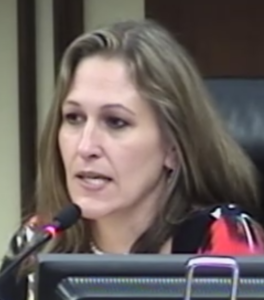
 The detail and Meed Ward’s rationalization are set out below along with maps that visualize the changes she thinks should be made.
The detail and Meed Ward’s rationalization are set out below along with maps that visualize the changes she thinks should be made.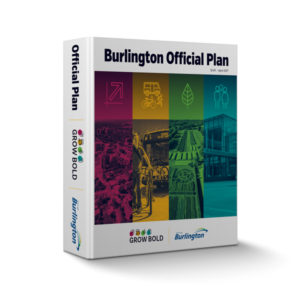 • There is considerable community opposition to some of the proposed changes, particularly in the downtown.
• There is considerable community opposition to some of the proposed changes, particularly in the downtown.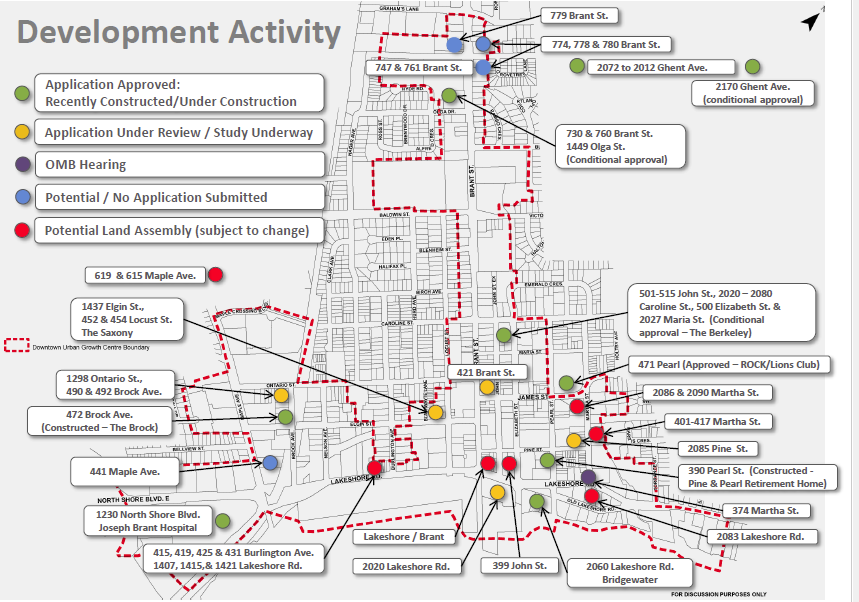
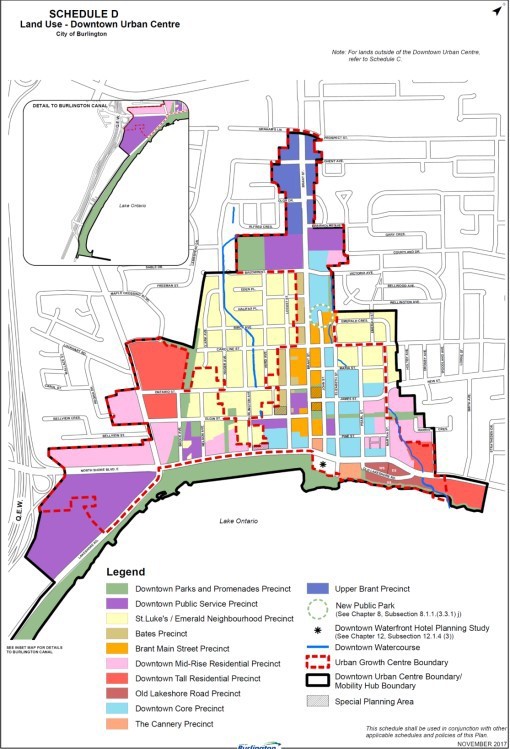
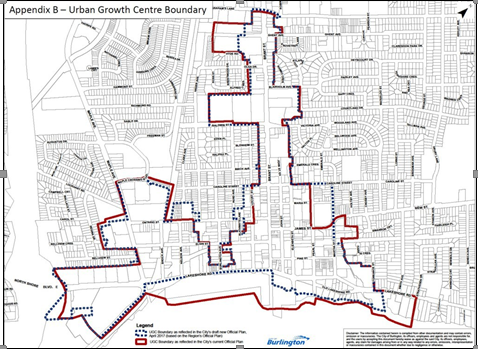
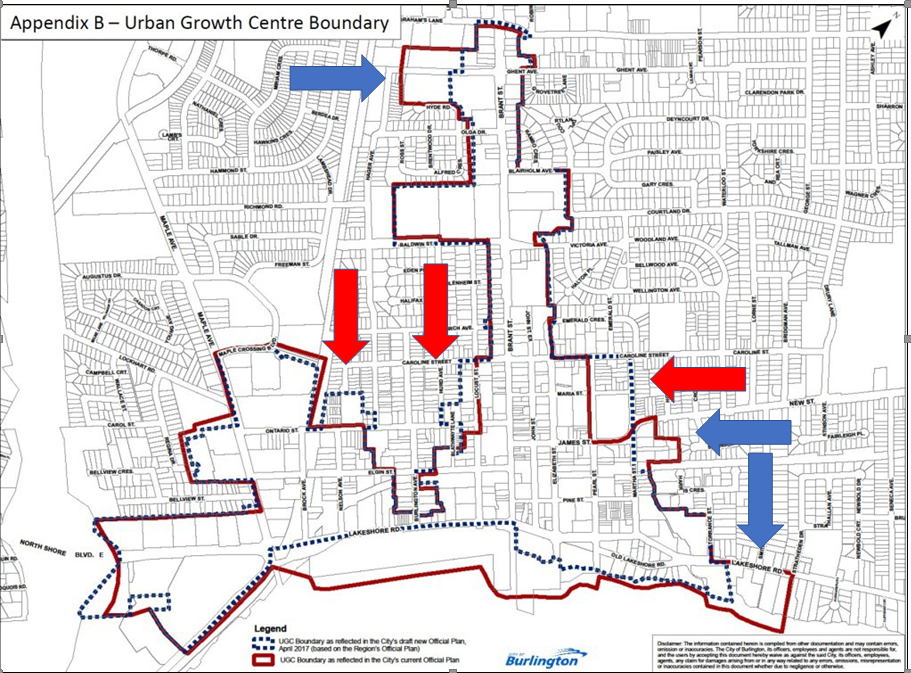
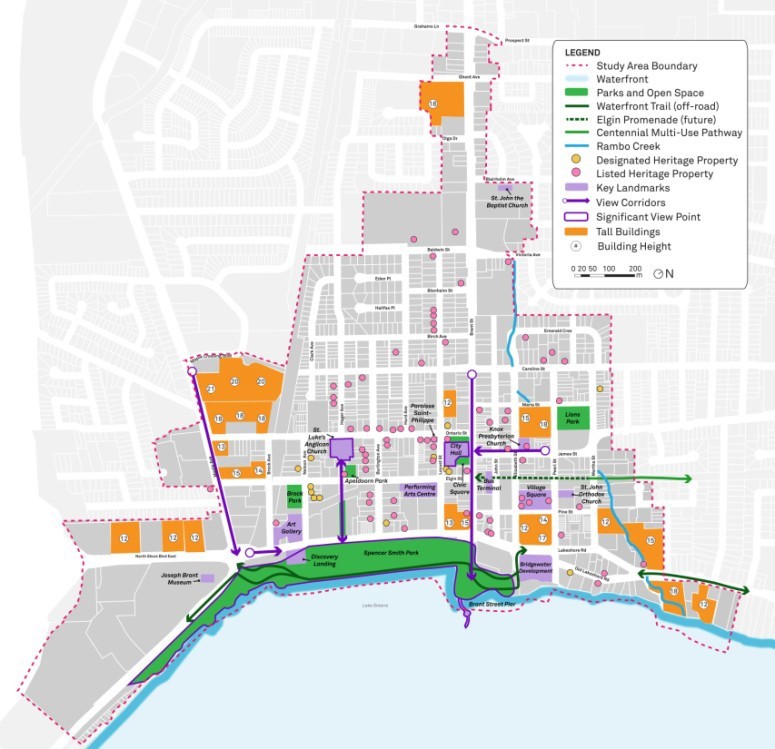
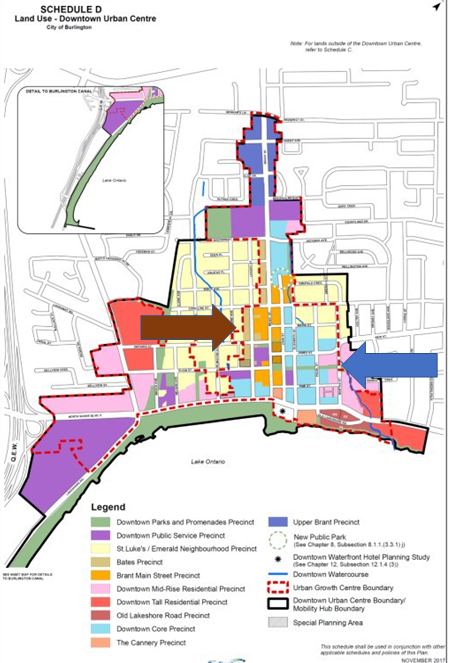
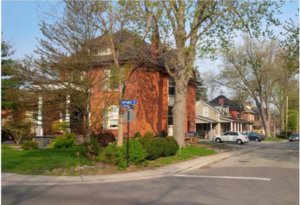
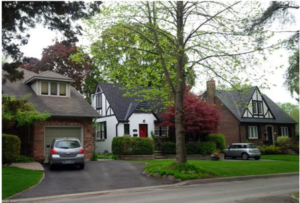
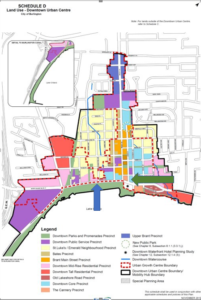
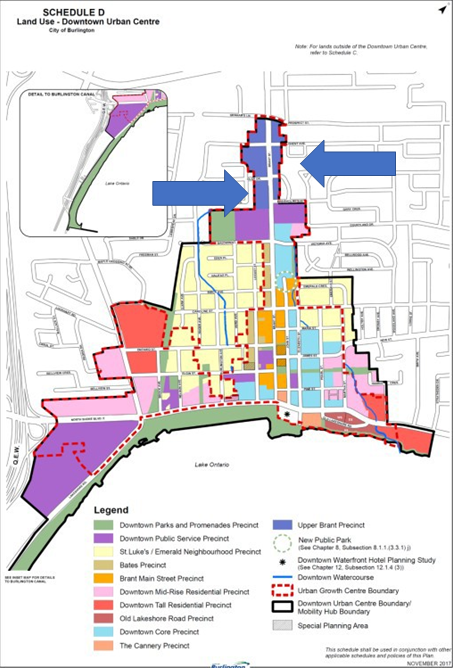
















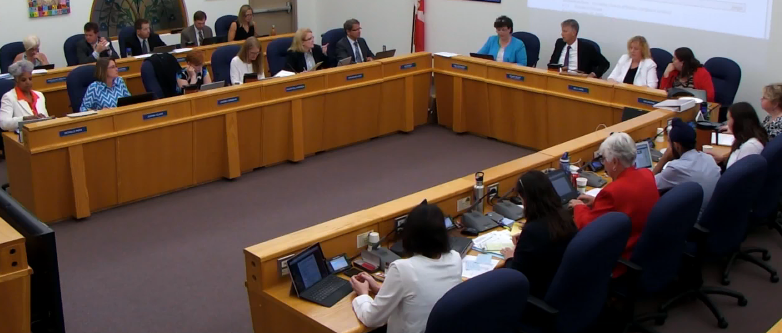
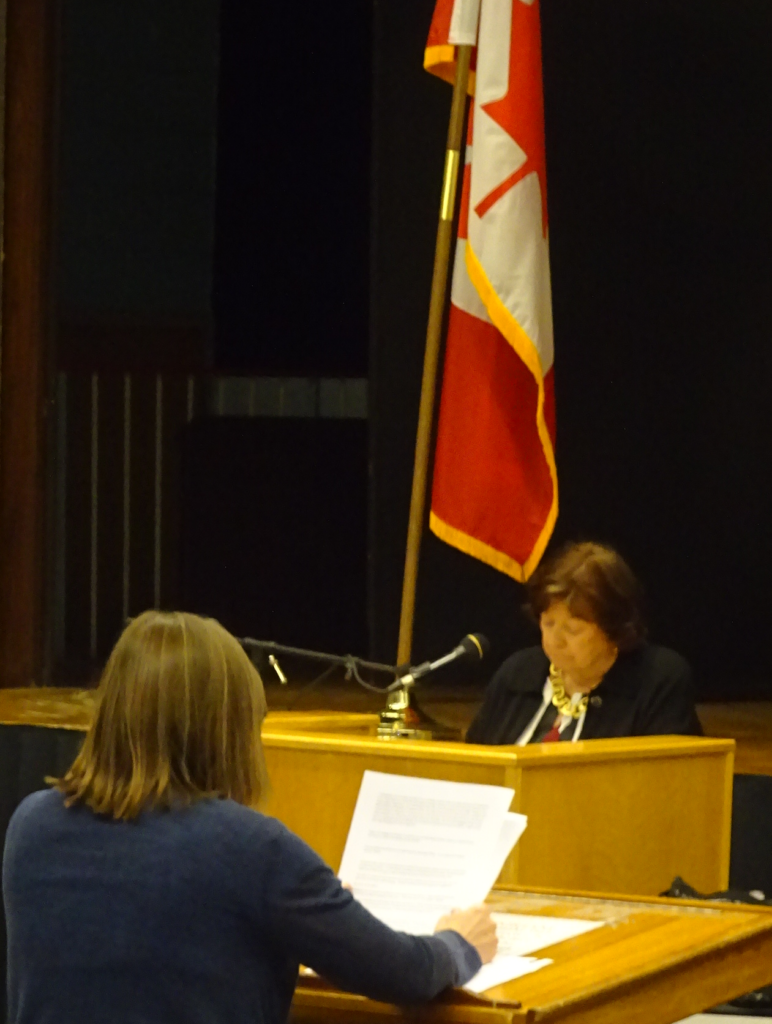
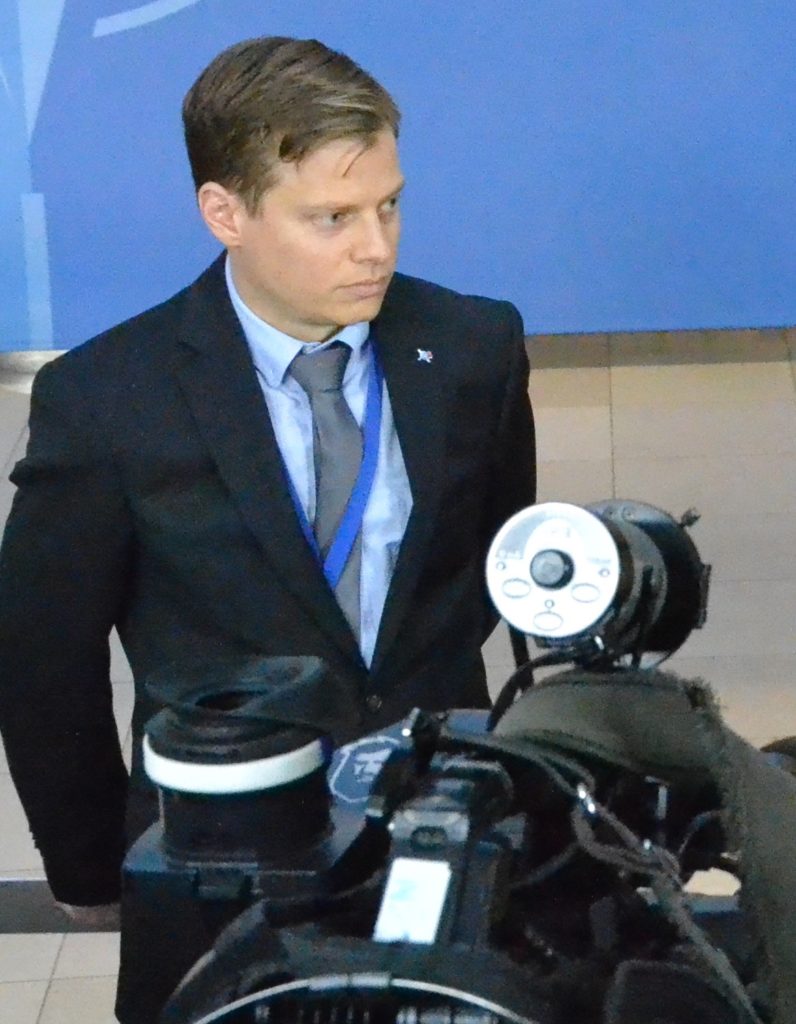
 Rory Nisan is a long-time Burlington resident and Lester B. Pearson High School alumnus. He has been an active member of the Save Pearson community organization, serves on the City of Burlington’s Mundialization Committee, and is co-creator and co-organizer of the One Burlington Festival, which brings together Burlingtonians of different faiths and cultures.
Rory Nisan is a long-time Burlington resident and Lester B. Pearson High School alumnus. He has been an active member of the Save Pearson community organization, serves on the City of Burlington’s Mundialization Committee, and is co-creator and co-organizer of the One Burlington Festival, which brings together Burlingtonians of different faiths and cultures.
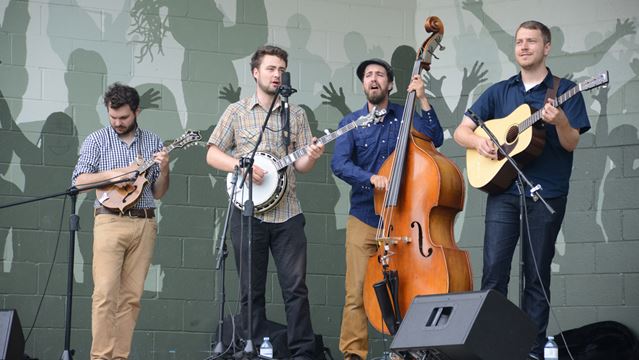

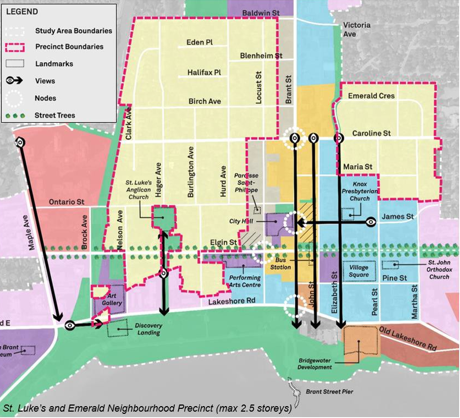
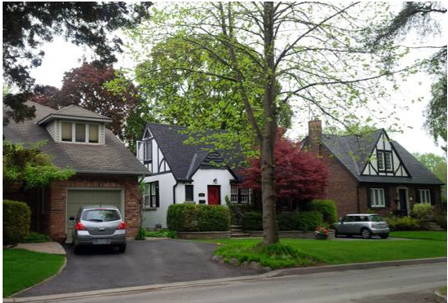
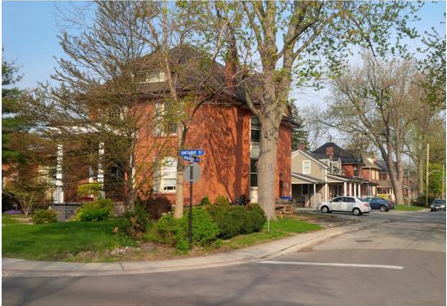
 The ward Councillor has served notice that she will be bringing none motions for changes in what the planners have put forward.
The ward Councillor has served notice that she will be bringing none motions for changes in what the planners have put forward.
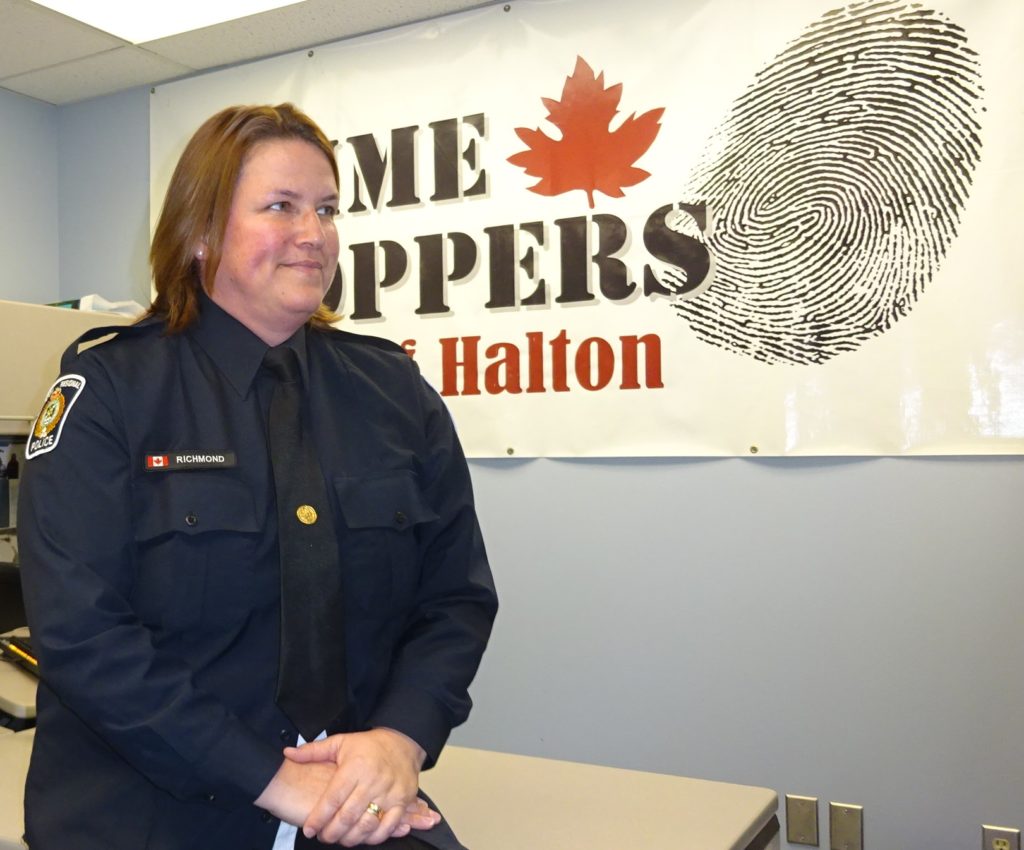






 Ray Rivers writes weekly on both federal and provincial politics, applying his more than 25 years as a federal bureaucrat to his thinking. Rivers was once a candidate for provincial office in Burlington. He was the founder of the Burlington citizen committee on sustainability at a time when climate warming was a hotly debated subject. Tweet @rayzrivers
Ray Rivers writes weekly on both federal and provincial politics, applying his more than 25 years as a federal bureaucrat to his thinking. Rivers was once a candidate for provincial office in Burlington. He was the founder of the Burlington citizen committee on sustainability at a time when climate warming was a hotly debated subject. Tweet @rayzrivers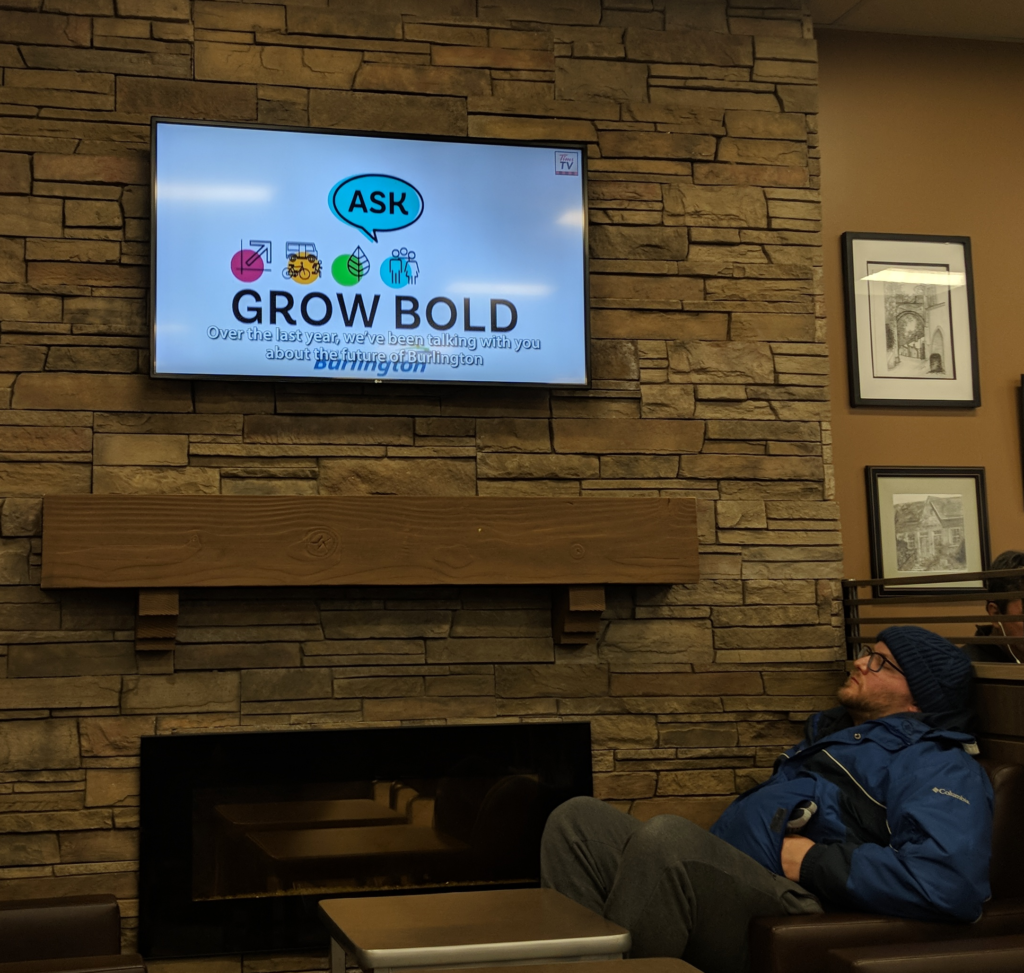
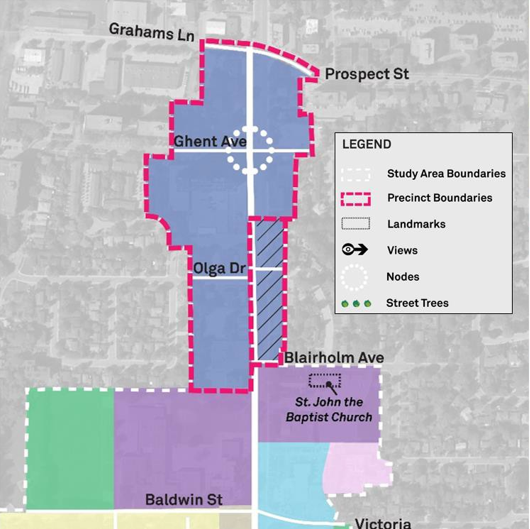
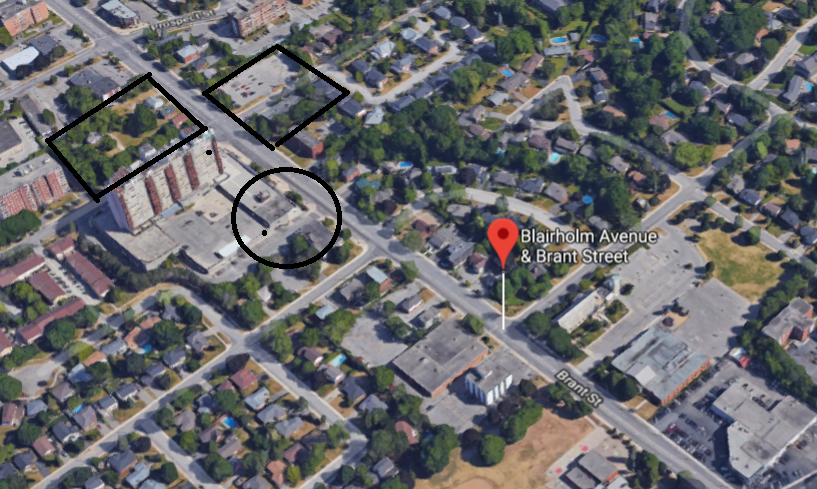
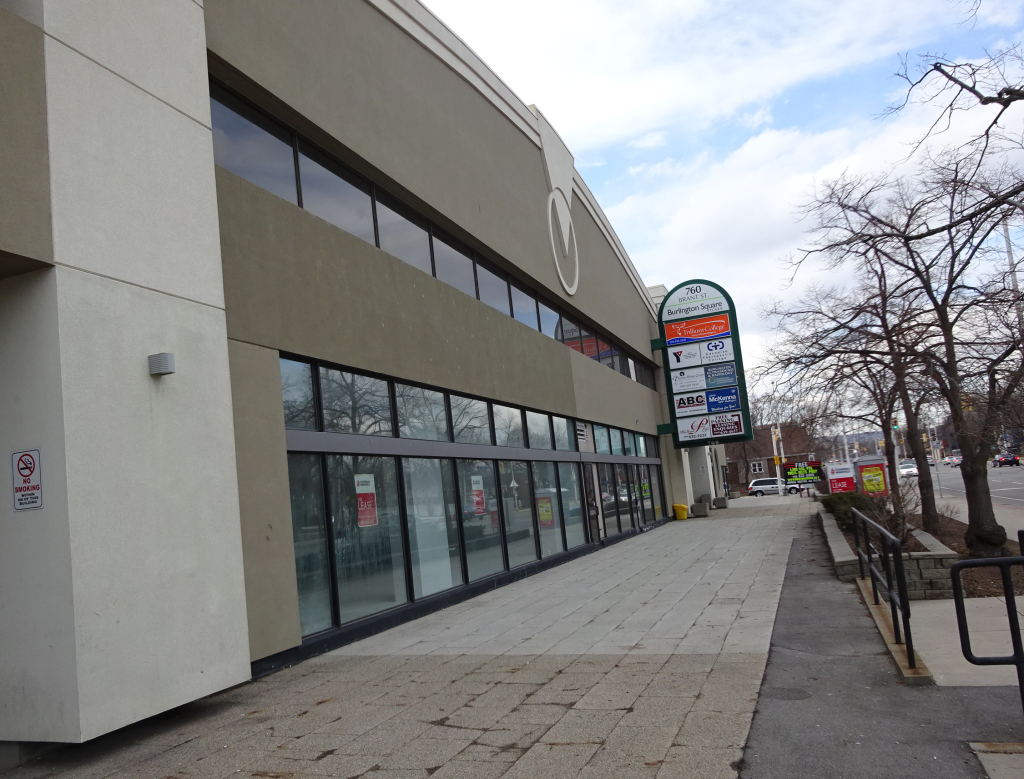




 With weather all over the map we plan for what we are told the weather is going to be during the day and know that it will probably change significantly before the end of the day.
With weather all over the map we plan for what we are told the weather is going to be during the day and know that it will probably change significantly before the end of the day.
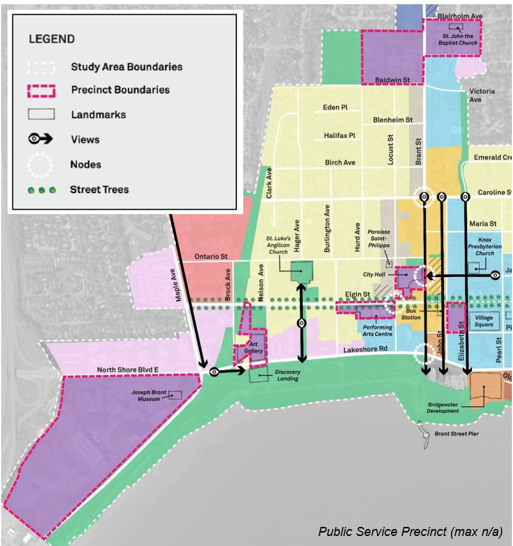
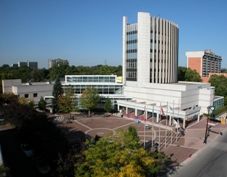
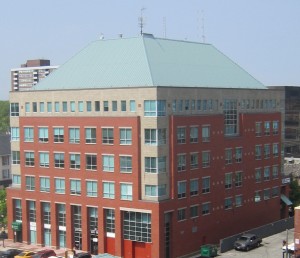

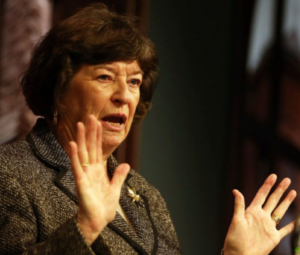
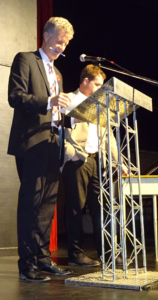


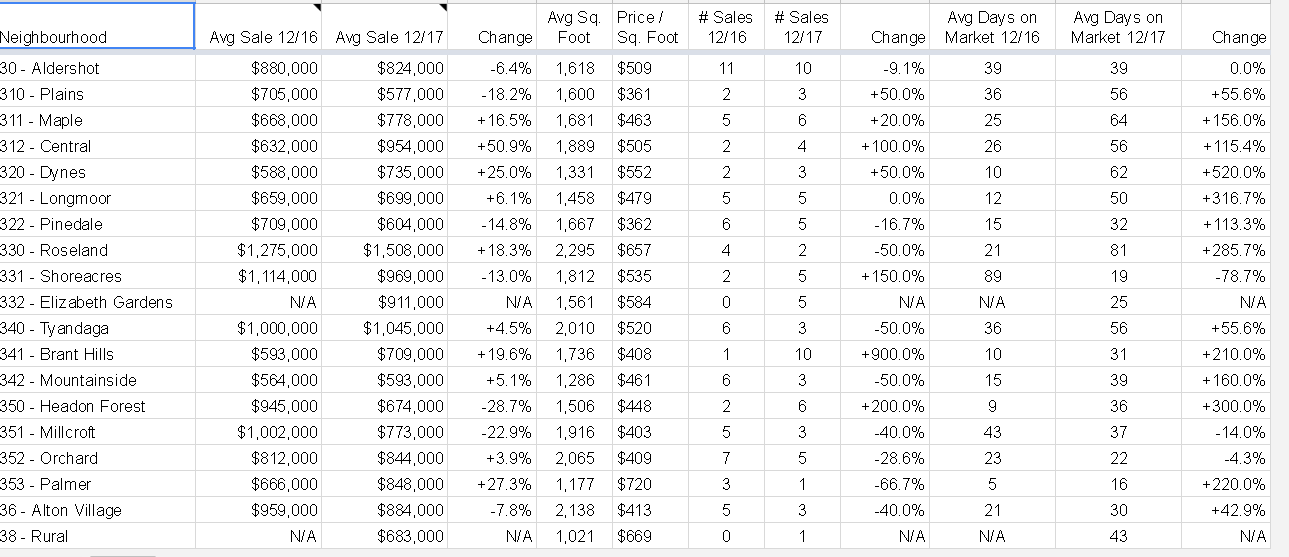

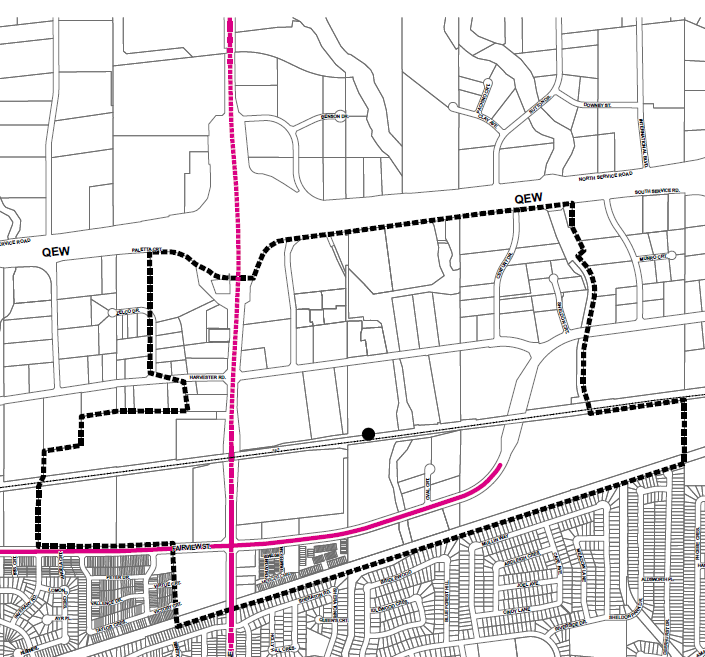 Wilson is a vice president at Sofina Foods; they are the corporate group that now owns Fearmans Pork Inc., which they acquired in 2012
Wilson is a vice president at Sofina Foods; they are the corporate group that now owns Fearmans Pork Inc., which they acquired in 2012
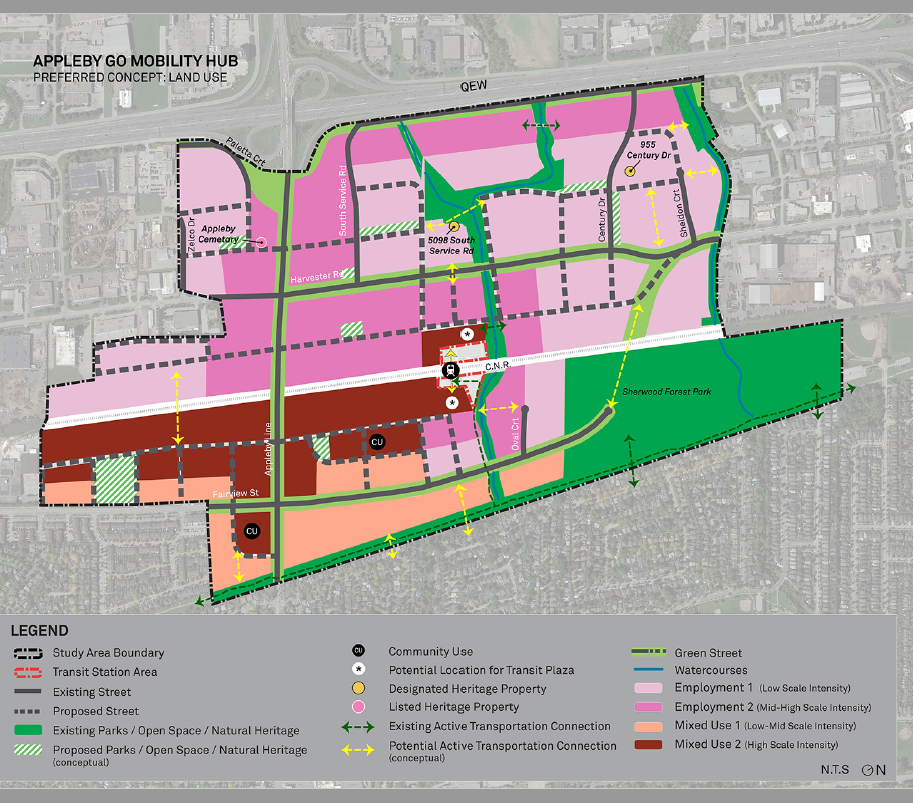 The problem was “land use conflicts” which Wilson didn’t want to say very much about. Mayor Goldring and Councillor Taylor asked pretty mild questions – hoping to learn a bit more about just what those land use conflicts were. Wilson kept dodging the question – he clearly didn’t want to talk in a public forum.
The problem was “land use conflicts” which Wilson didn’t want to say very much about. Mayor Goldring and Councillor Taylor asked pretty mild questions – hoping to learn a bit more about just what those land use conflicts were. Wilson kept dodging the question – he clearly didn’t want to talk in a public forum.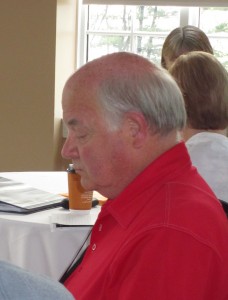
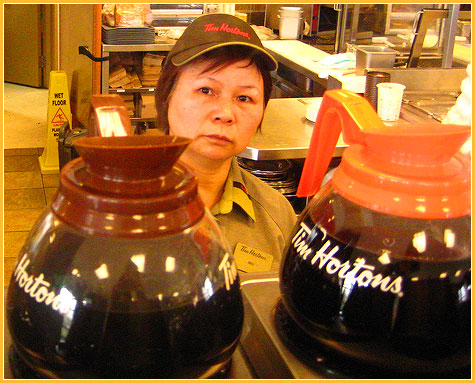 How does one navigate through these troubled waters? Let’s start by trying to find answers to a few key questions. First, does the overall economy suffer? Secondly, who benefits and who loses? Thirdly, have the media been responsible in reporting the situation?
How does one navigate through these troubled waters? Let’s start by trying to find answers to a few key questions. First, does the overall economy suffer? Secondly, who benefits and who loses? Thirdly, have the media been responsible in reporting the situation? Of course, if they find it necessary to raise their prices, so will their competitors, so they are not at a competitive disadvantage. Nevertheless, some small businesses may close or reduce the number of employees or reduce their hours and benefits. While that is regrettable, it may indicate that those businesses were operating unsuccessfully in a competitive market. The minimum wage increase may have the effect of eliminating some businesses that are not viable.
Of course, if they find it necessary to raise their prices, so will their competitors, so they are not at a competitive disadvantage. Nevertheless, some small businesses may close or reduce the number of employees or reduce their hours and benefits. While that is regrettable, it may indicate that those businesses were operating unsuccessfully in a competitive market. The minimum wage increase may have the effect of eliminating some businesses that are not viable. The above example shows the importance of context. There is also, of course, the “spin” that editors put on news stories or opinion pieces. For some, Kathleen Wynne and the Ontario Liberal government are, finally, doing the right thing by helping the working poor in a meaningful way. For others they are simply opportunists with an election coming in five months’ time.
The above example shows the importance of context. There is also, of course, the “spin” that editors put on news stories or opinion pieces. For some, Kathleen Wynne and the Ontario Liberal government are, finally, doing the right thing by helping the working poor in a meaningful way. For others they are simply opportunists with an election coming in five months’ time.